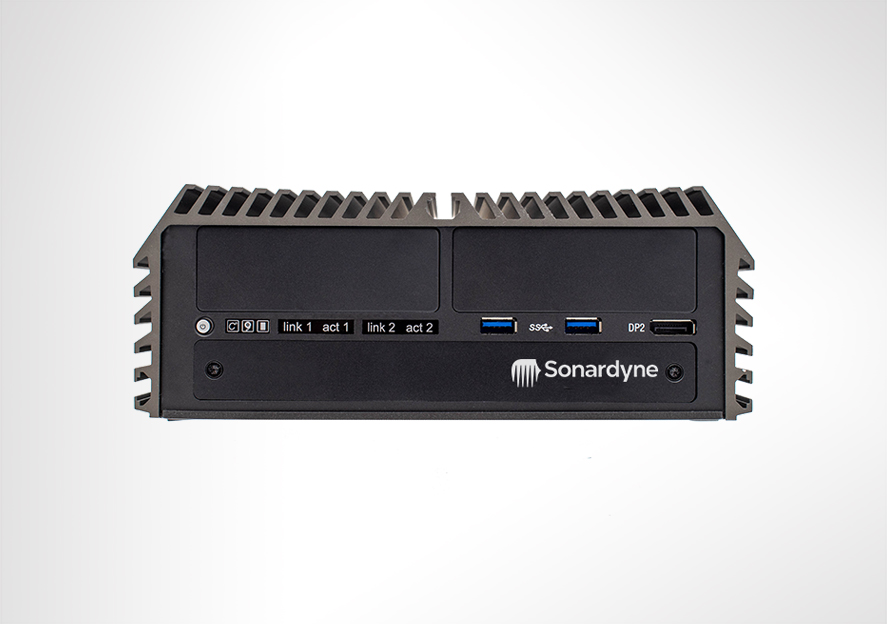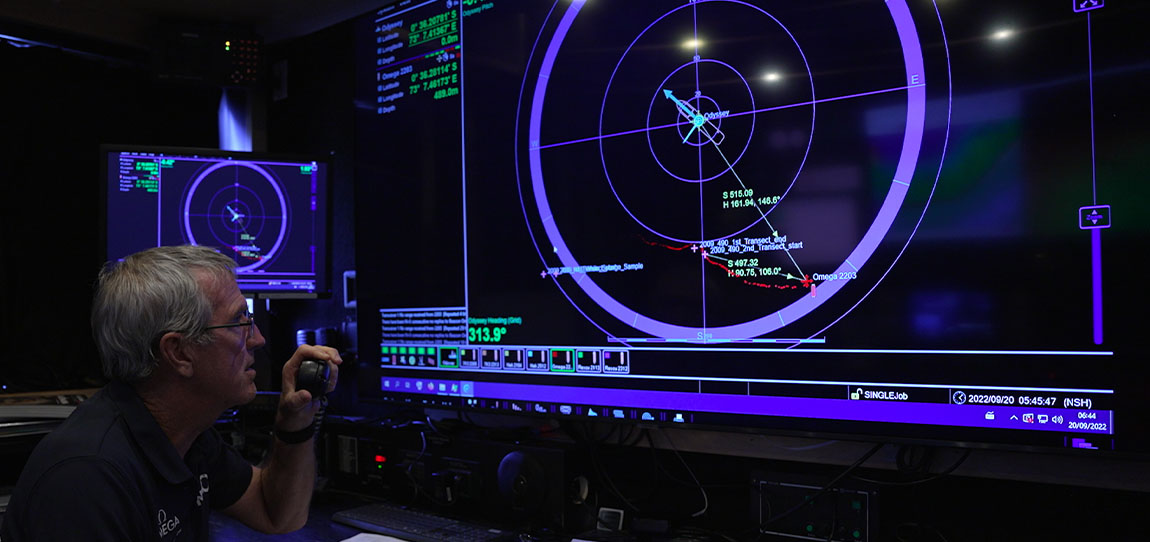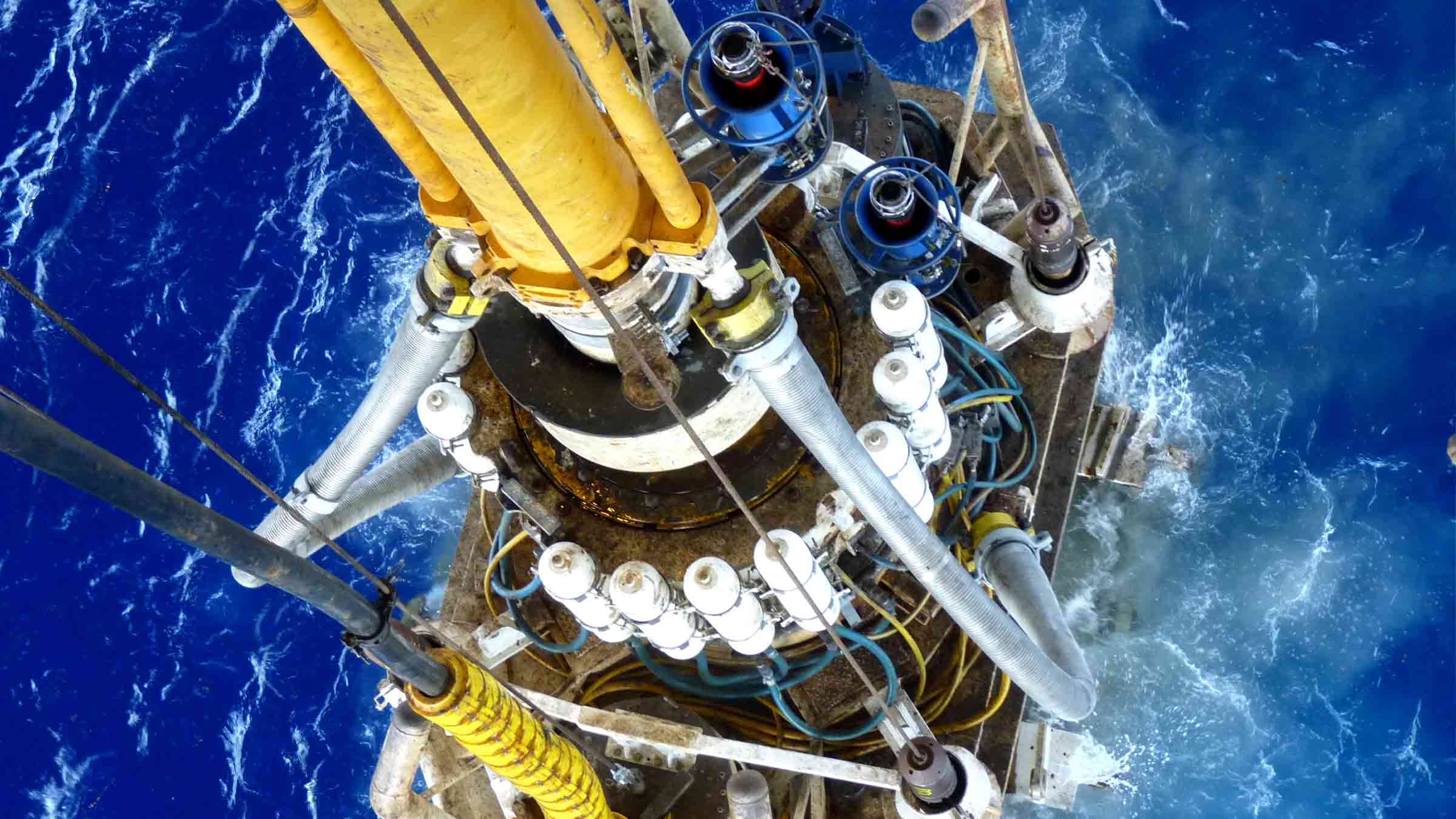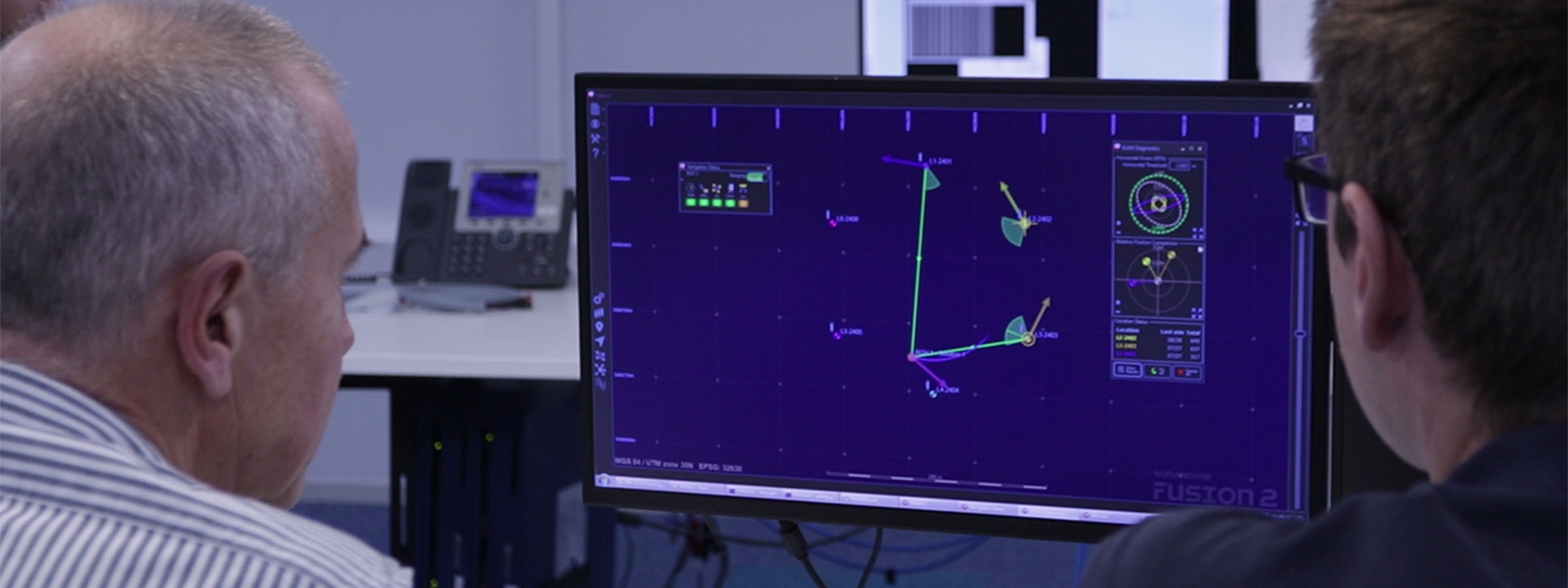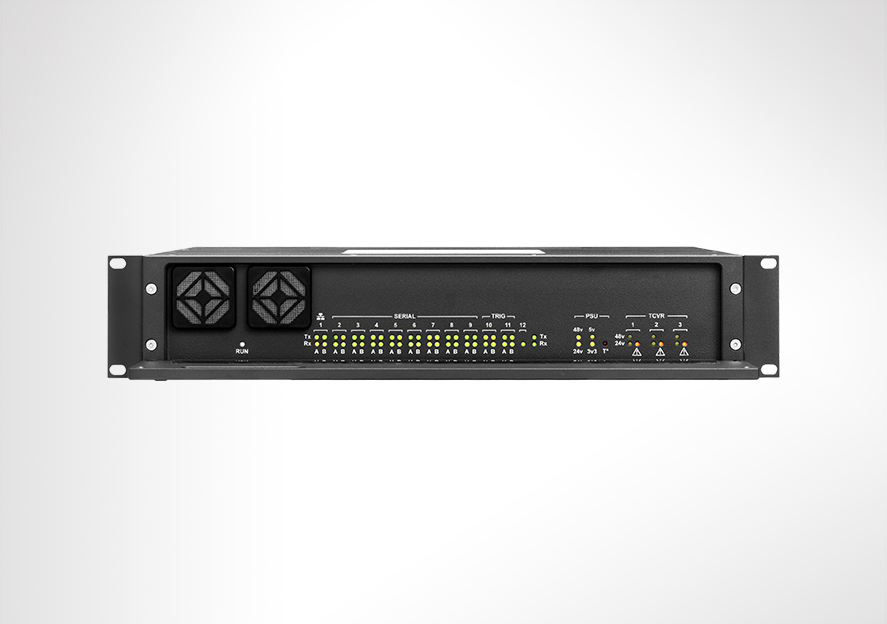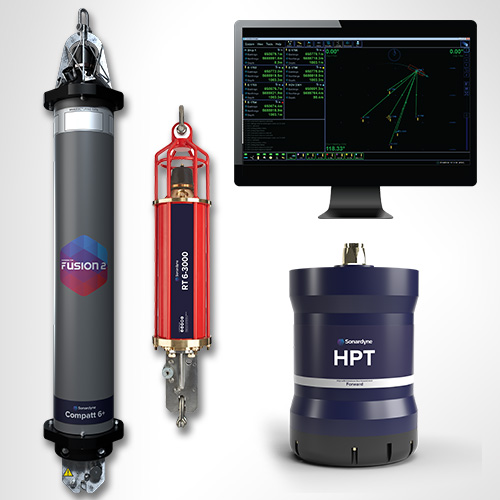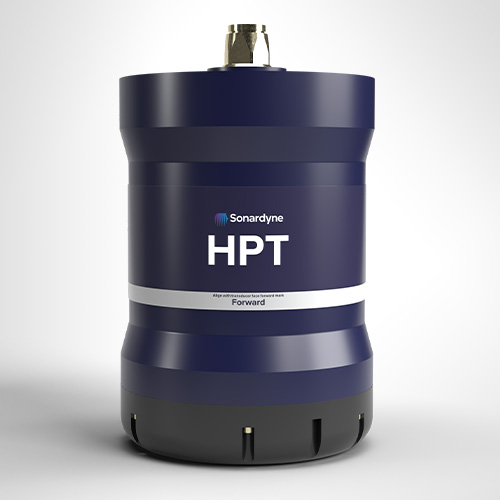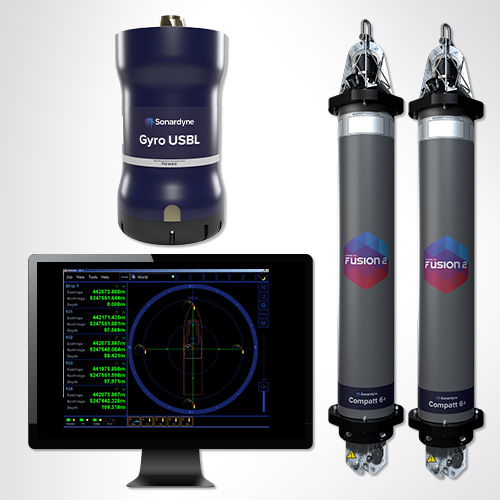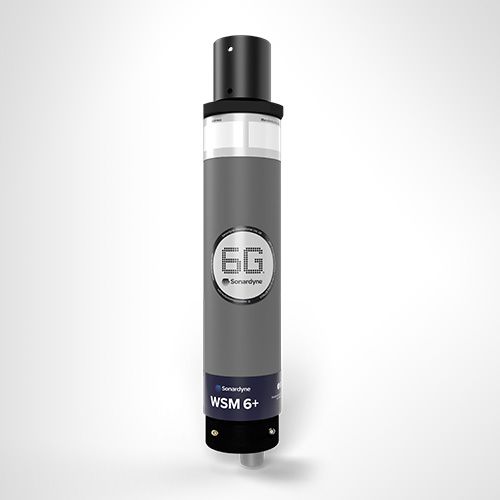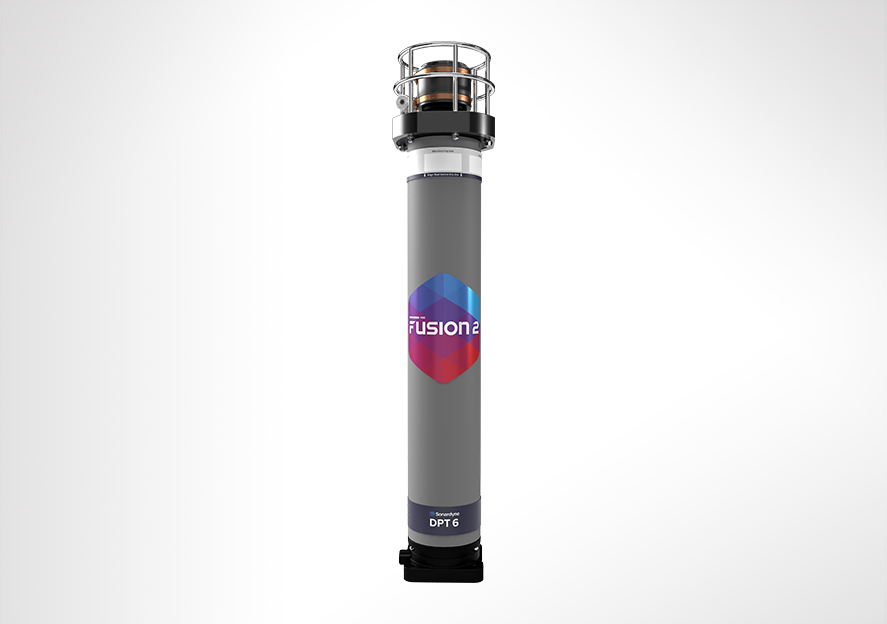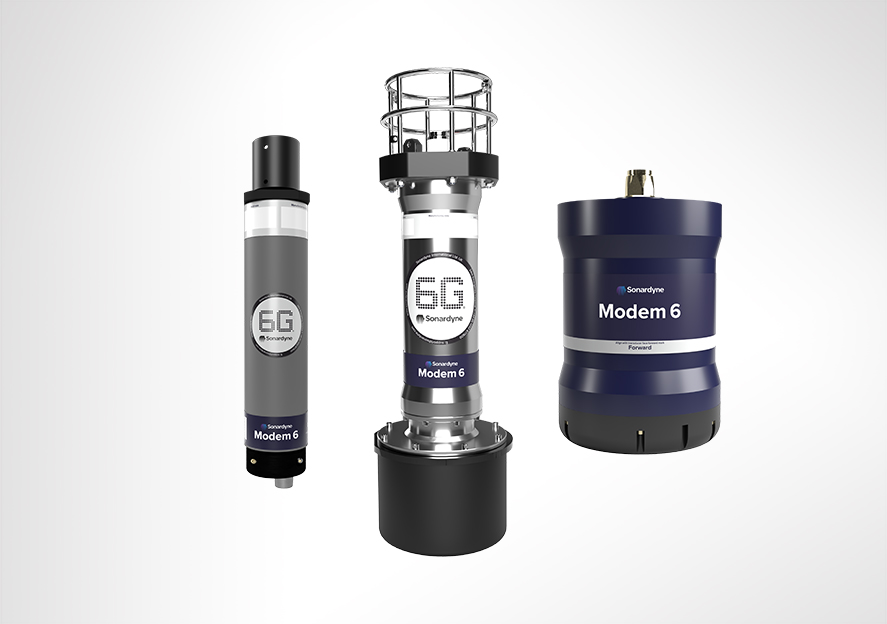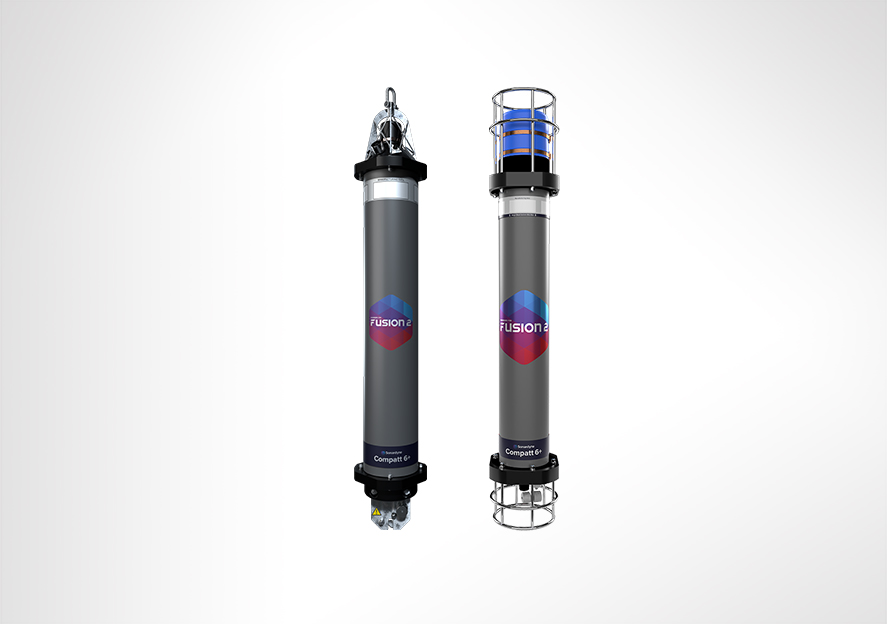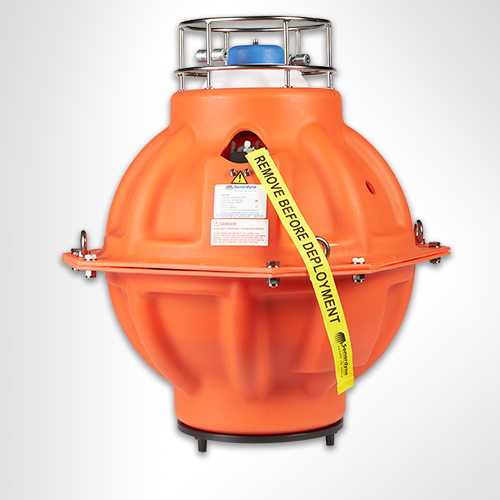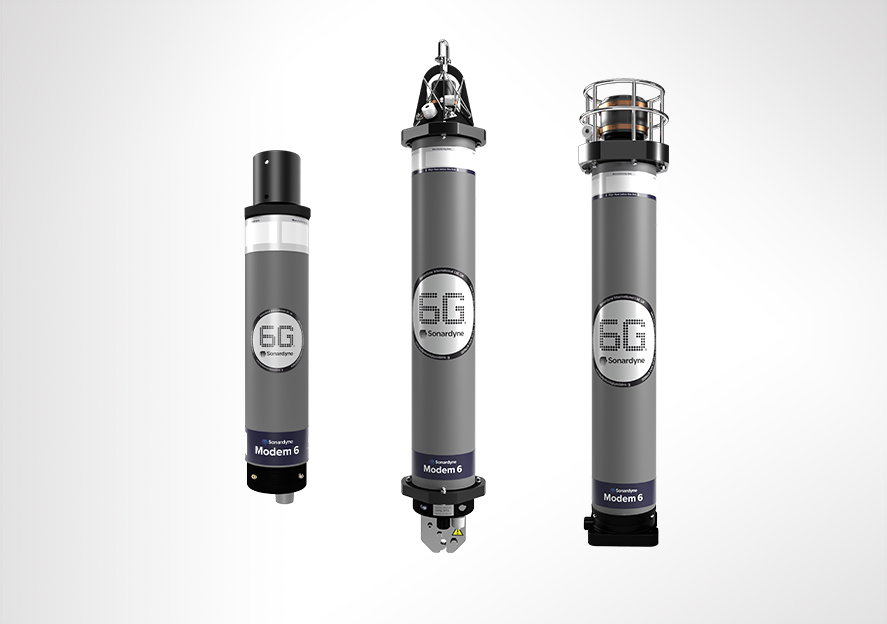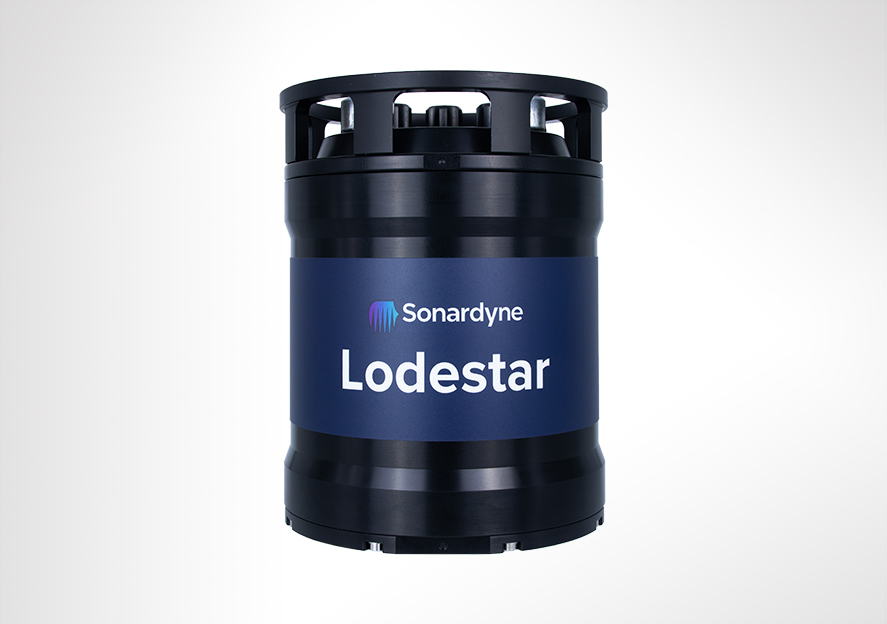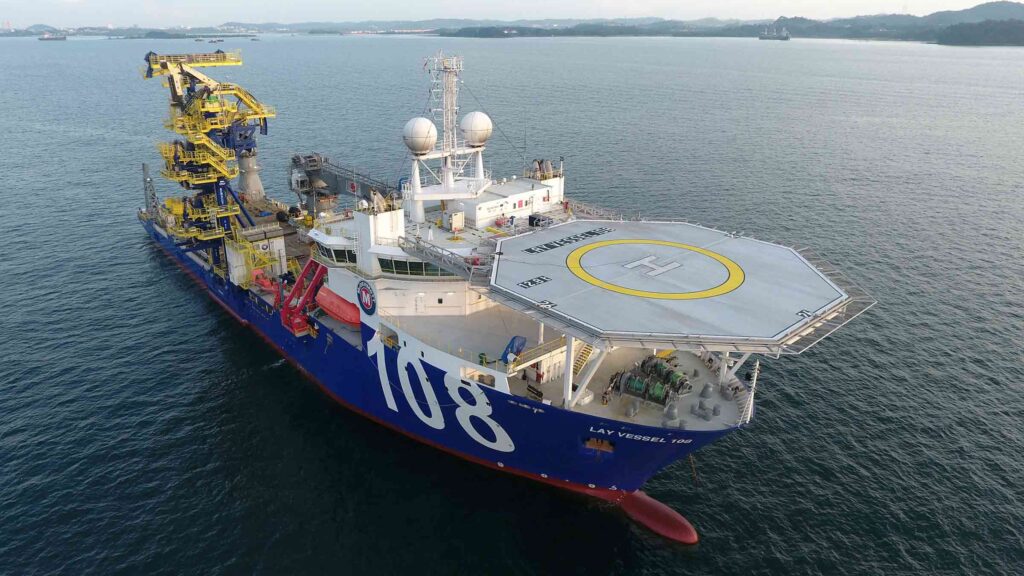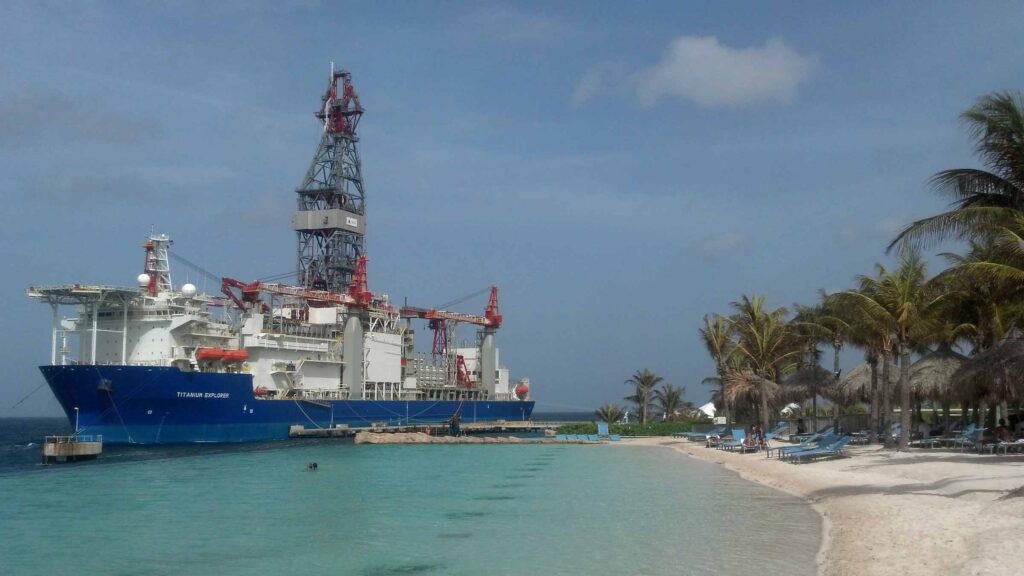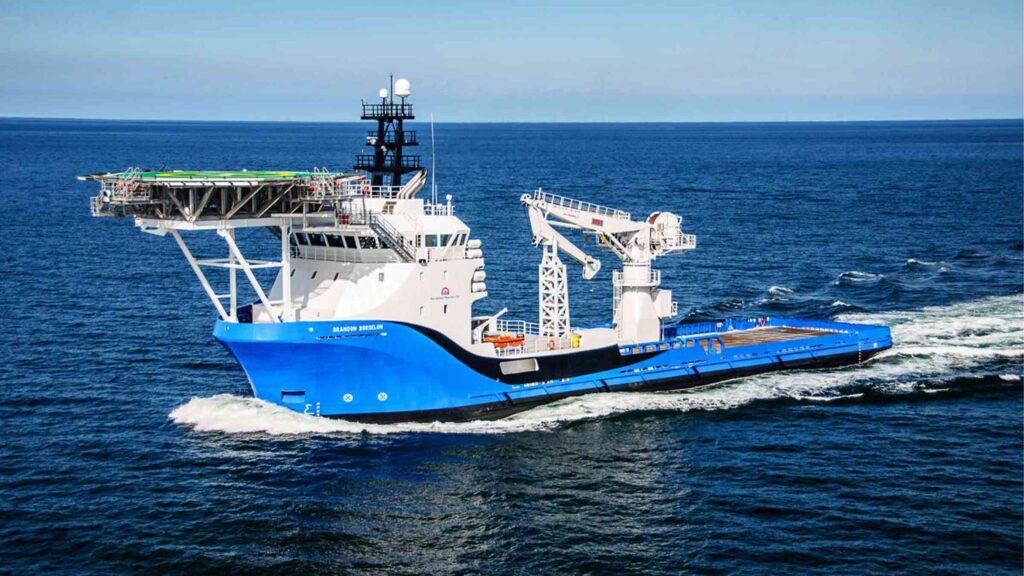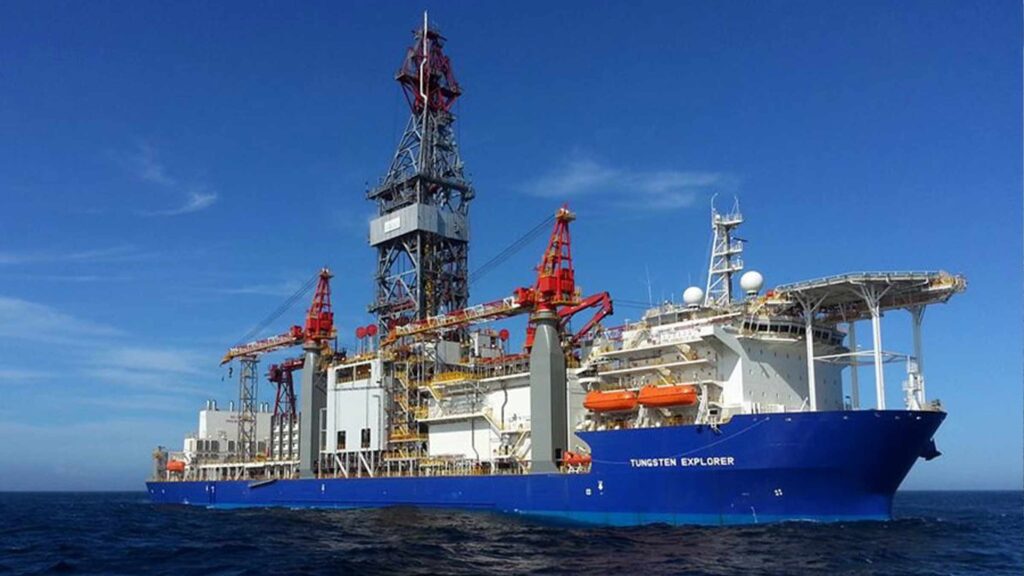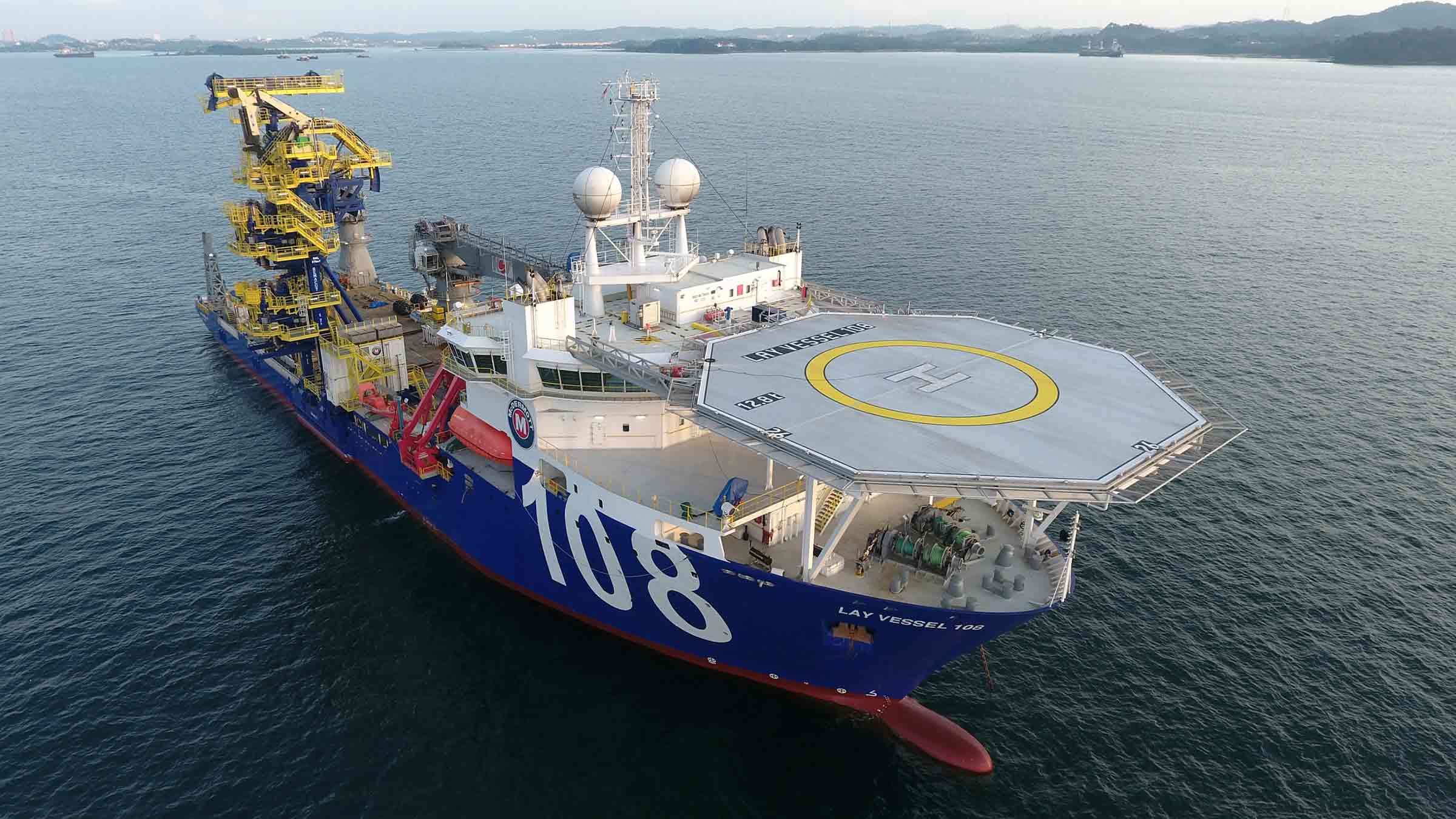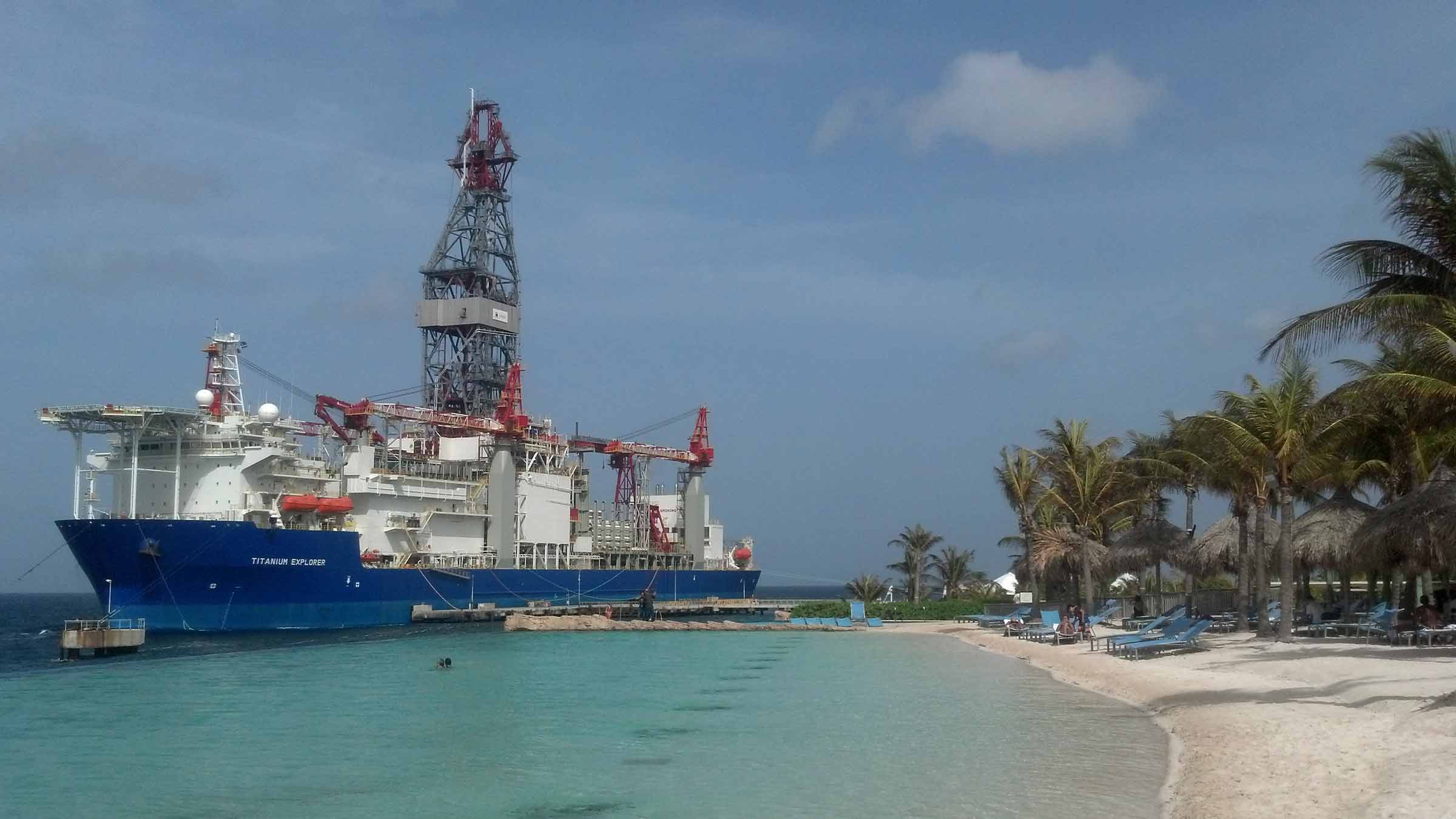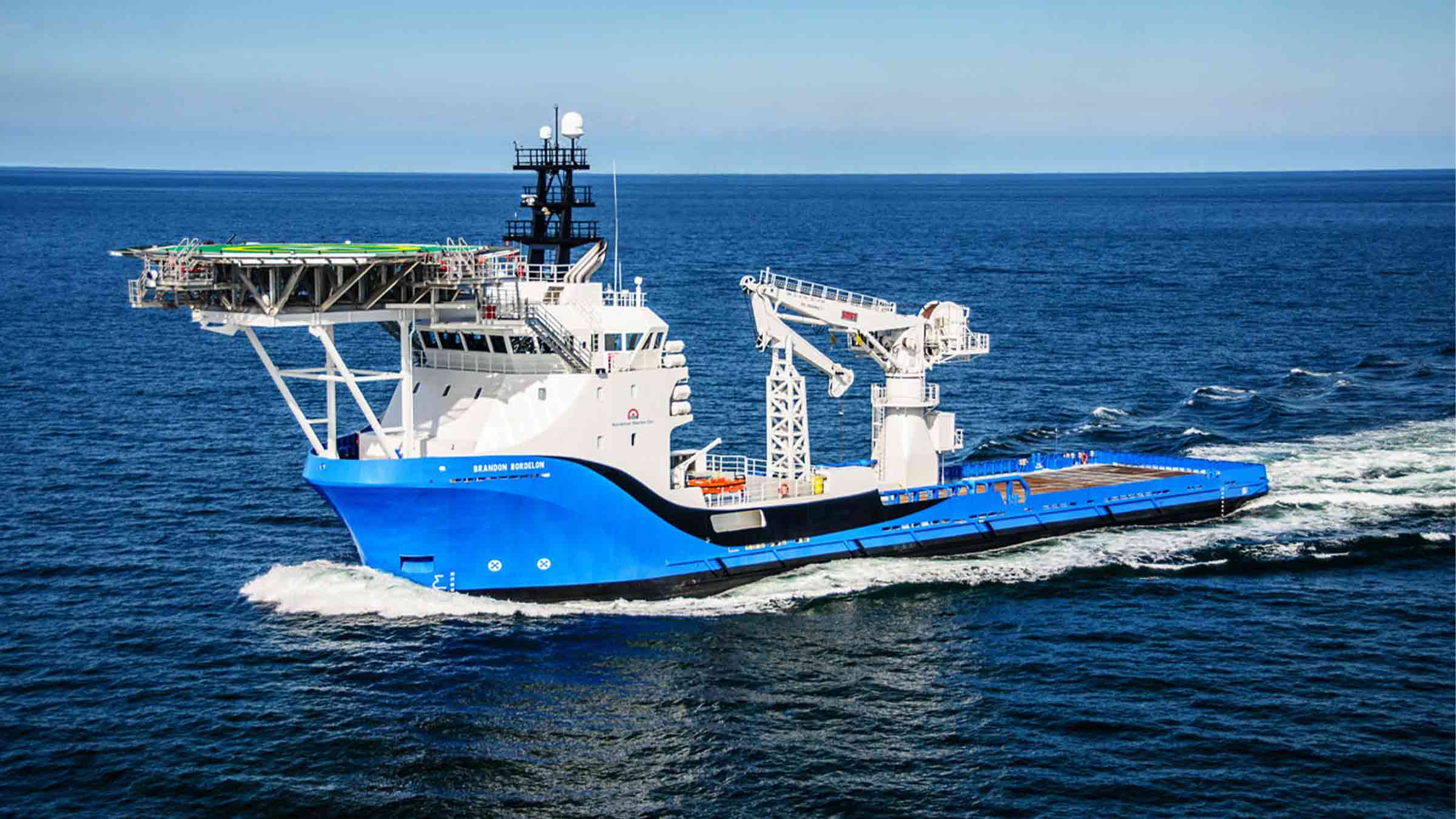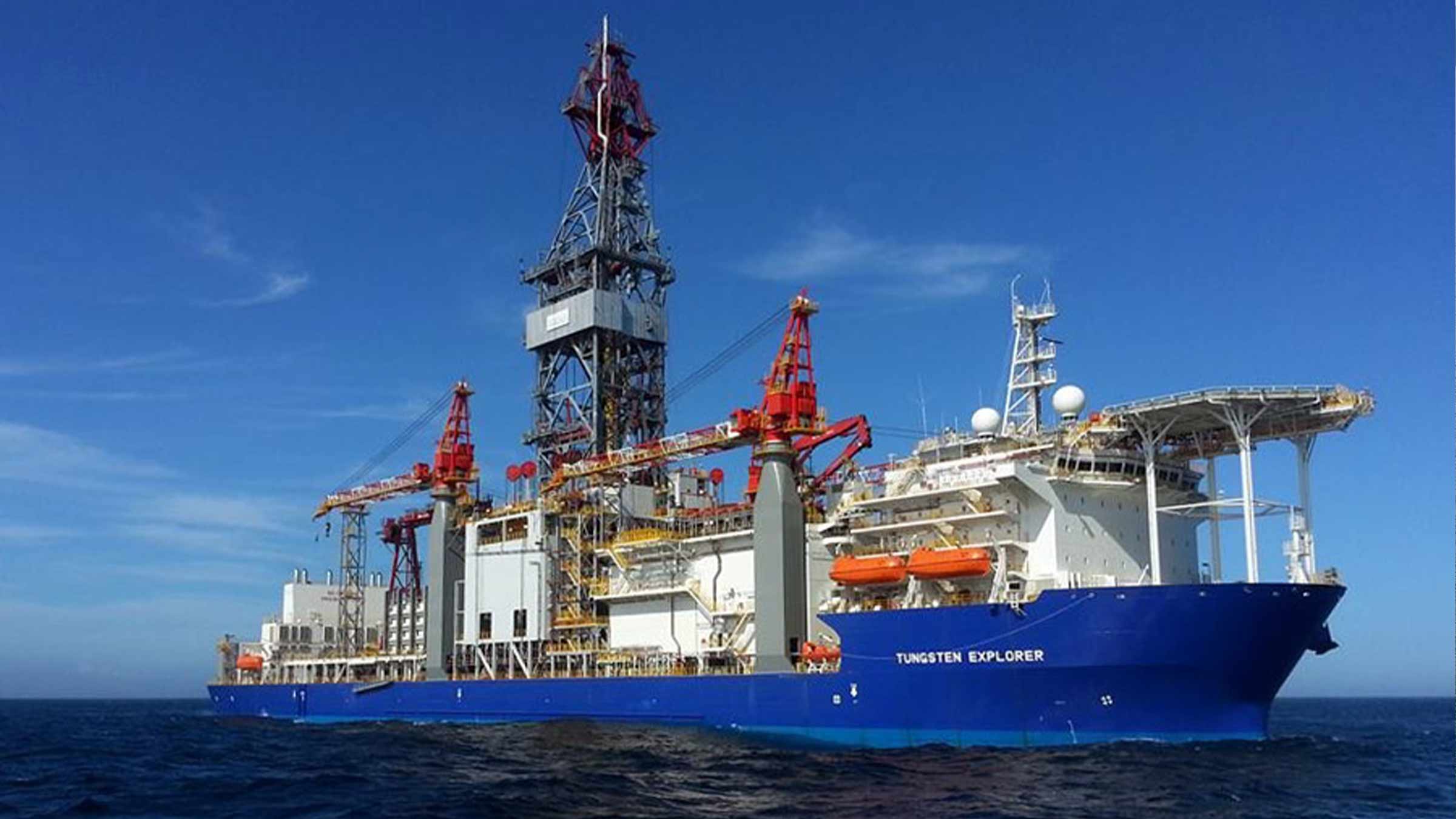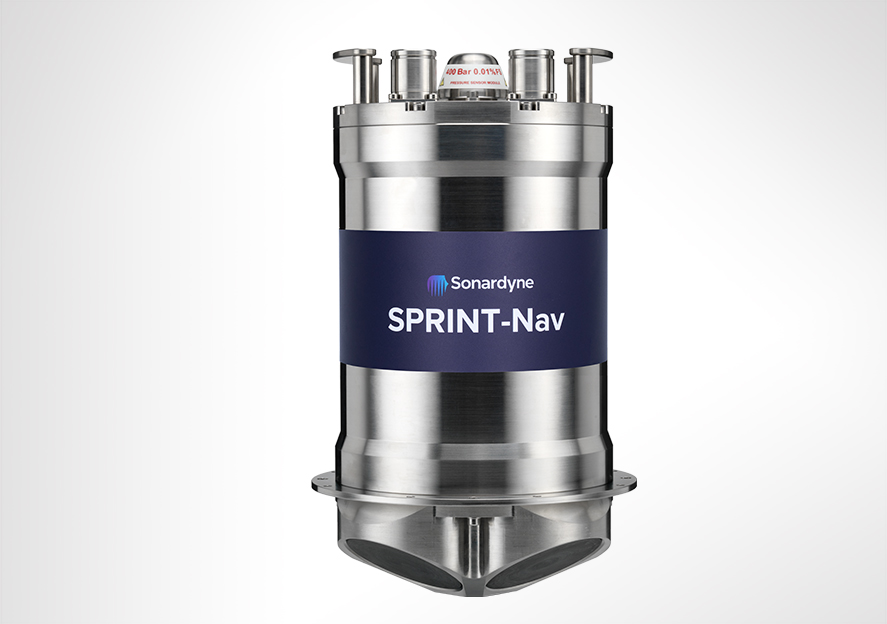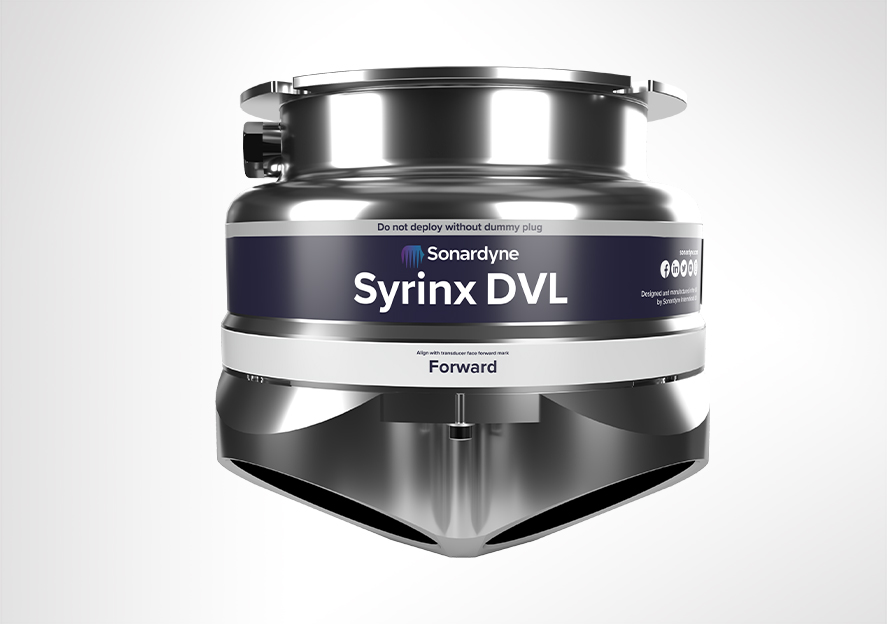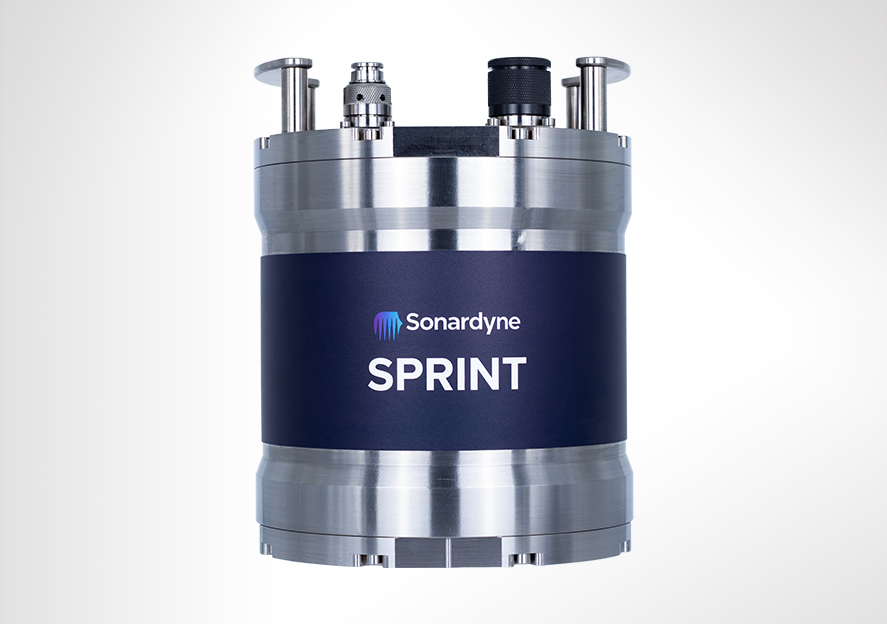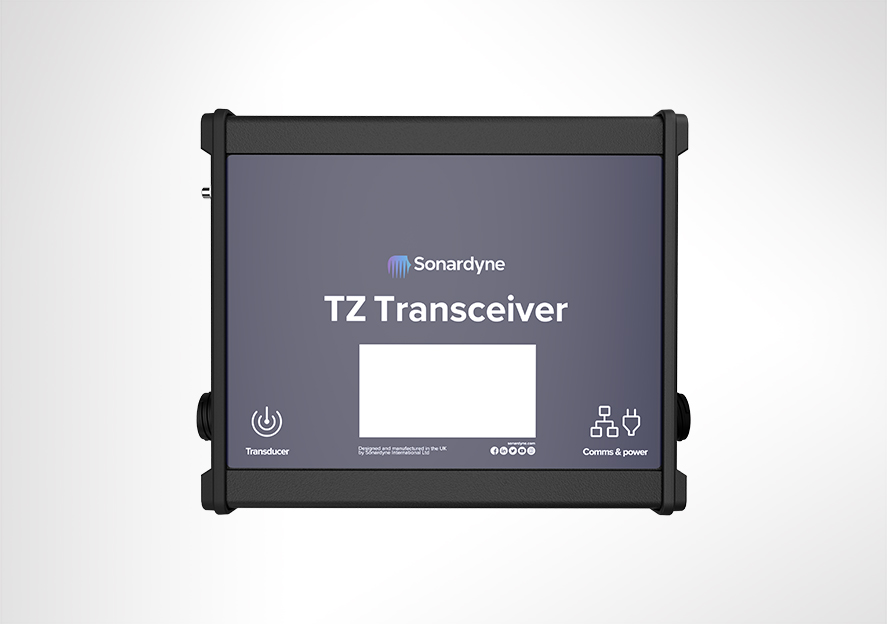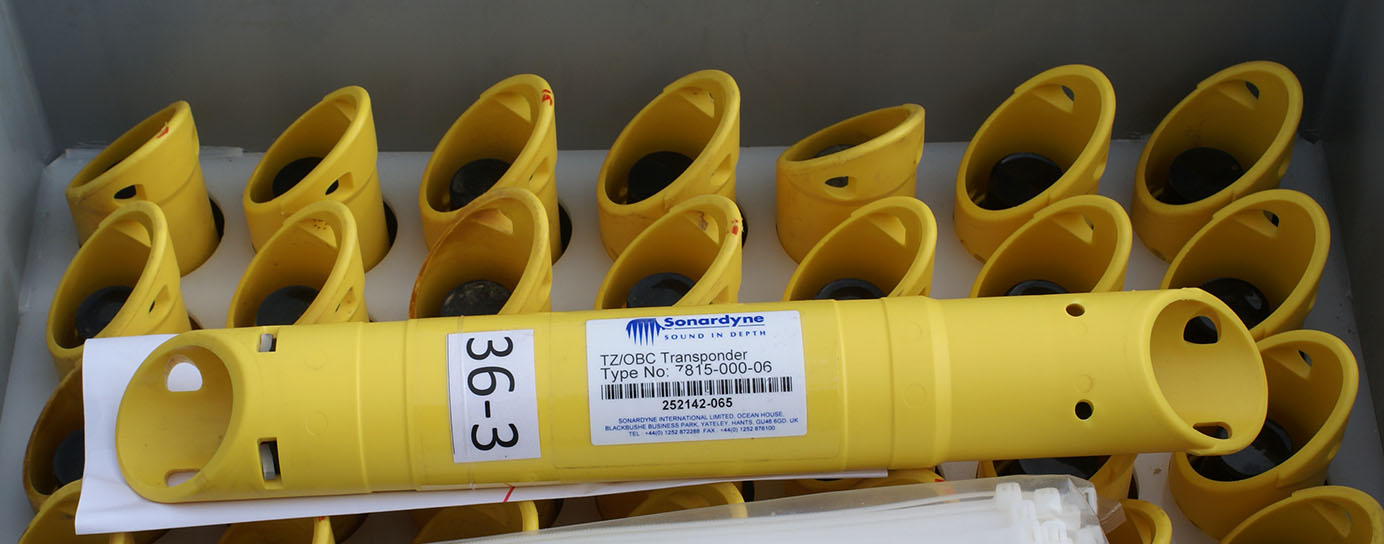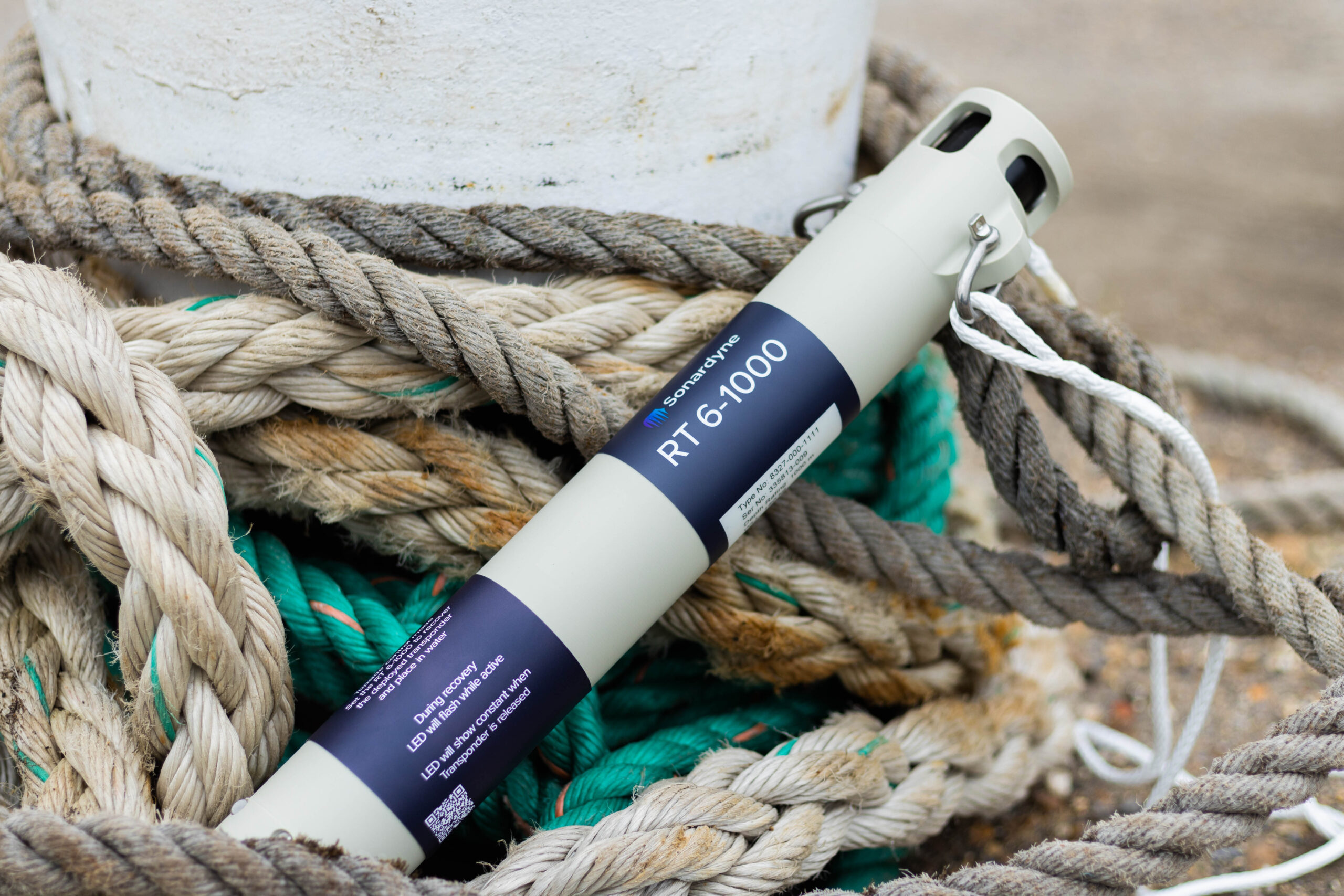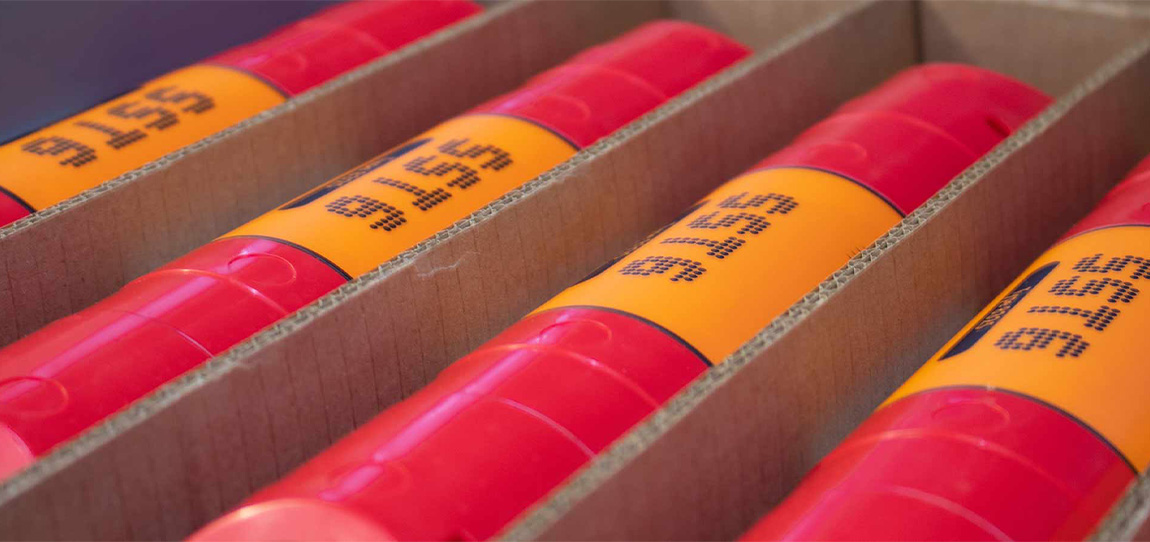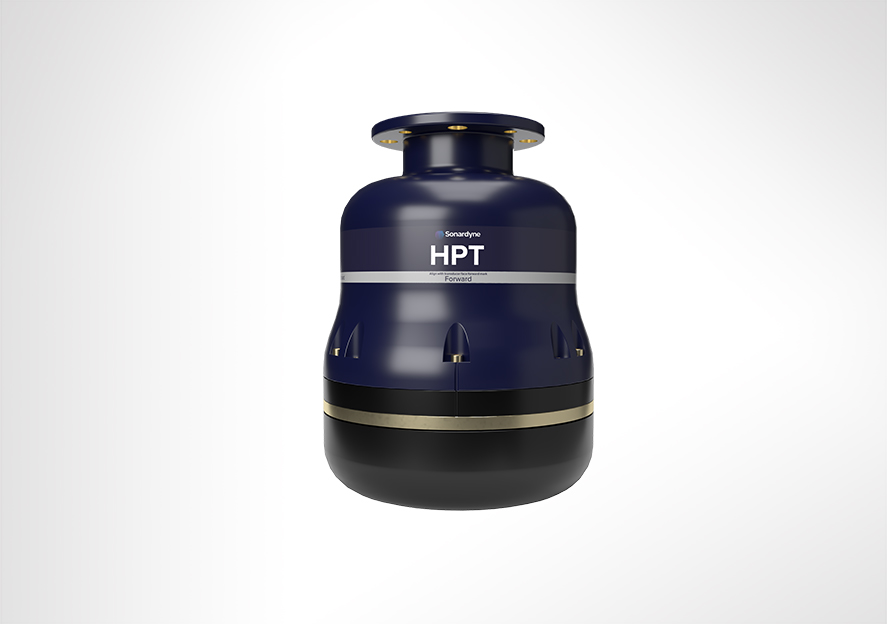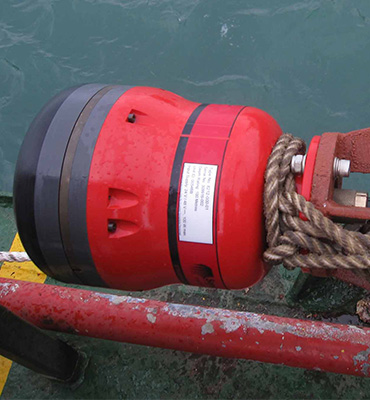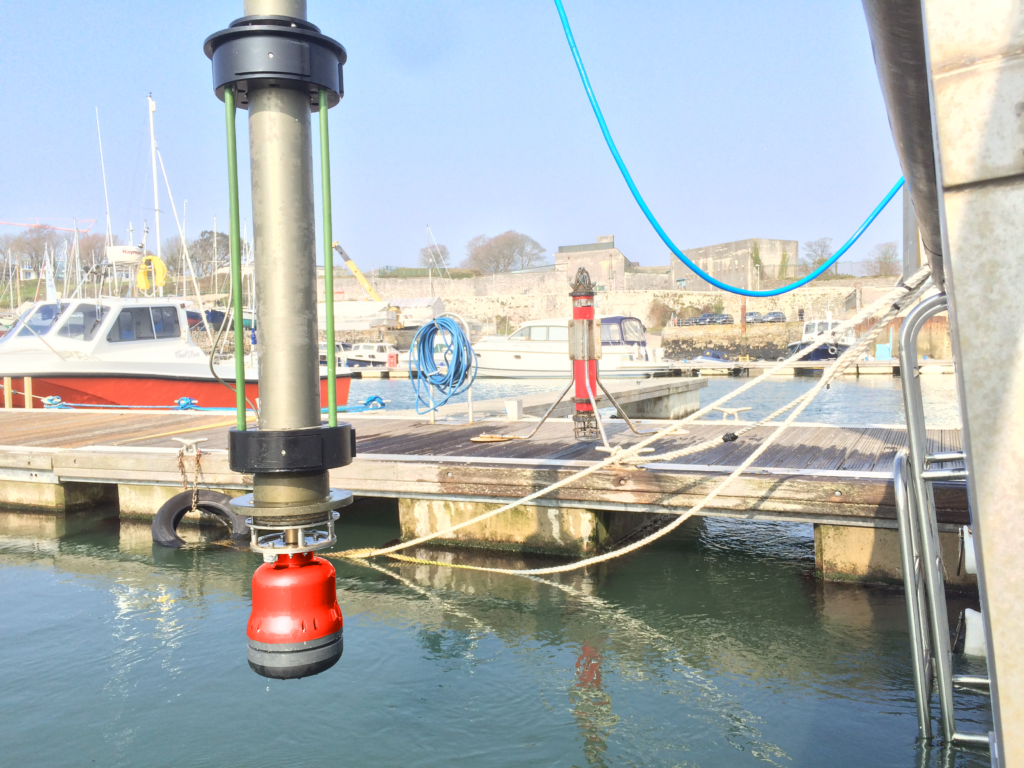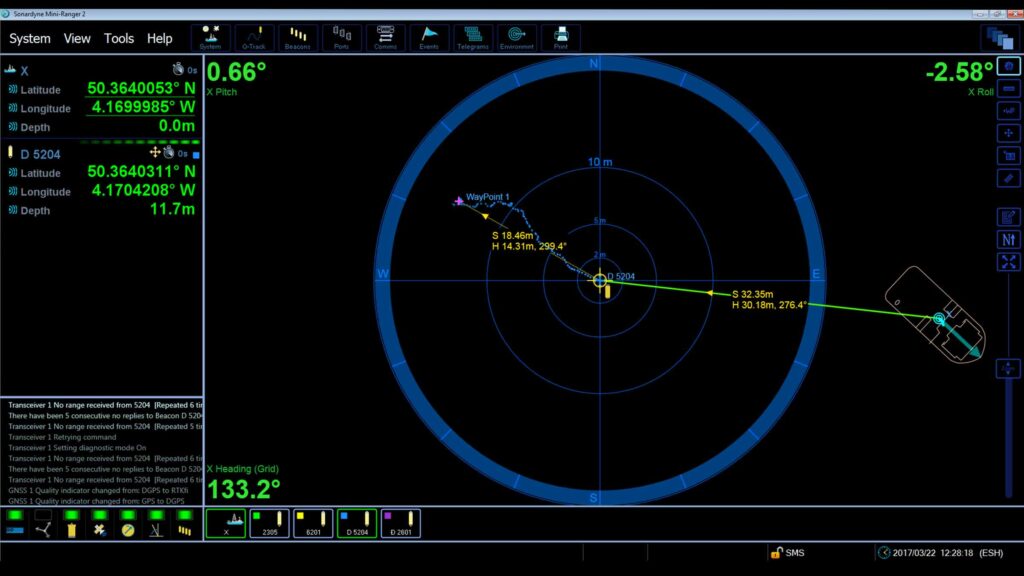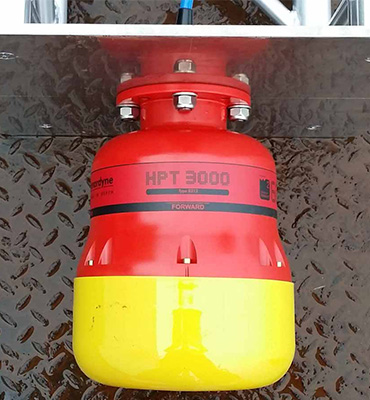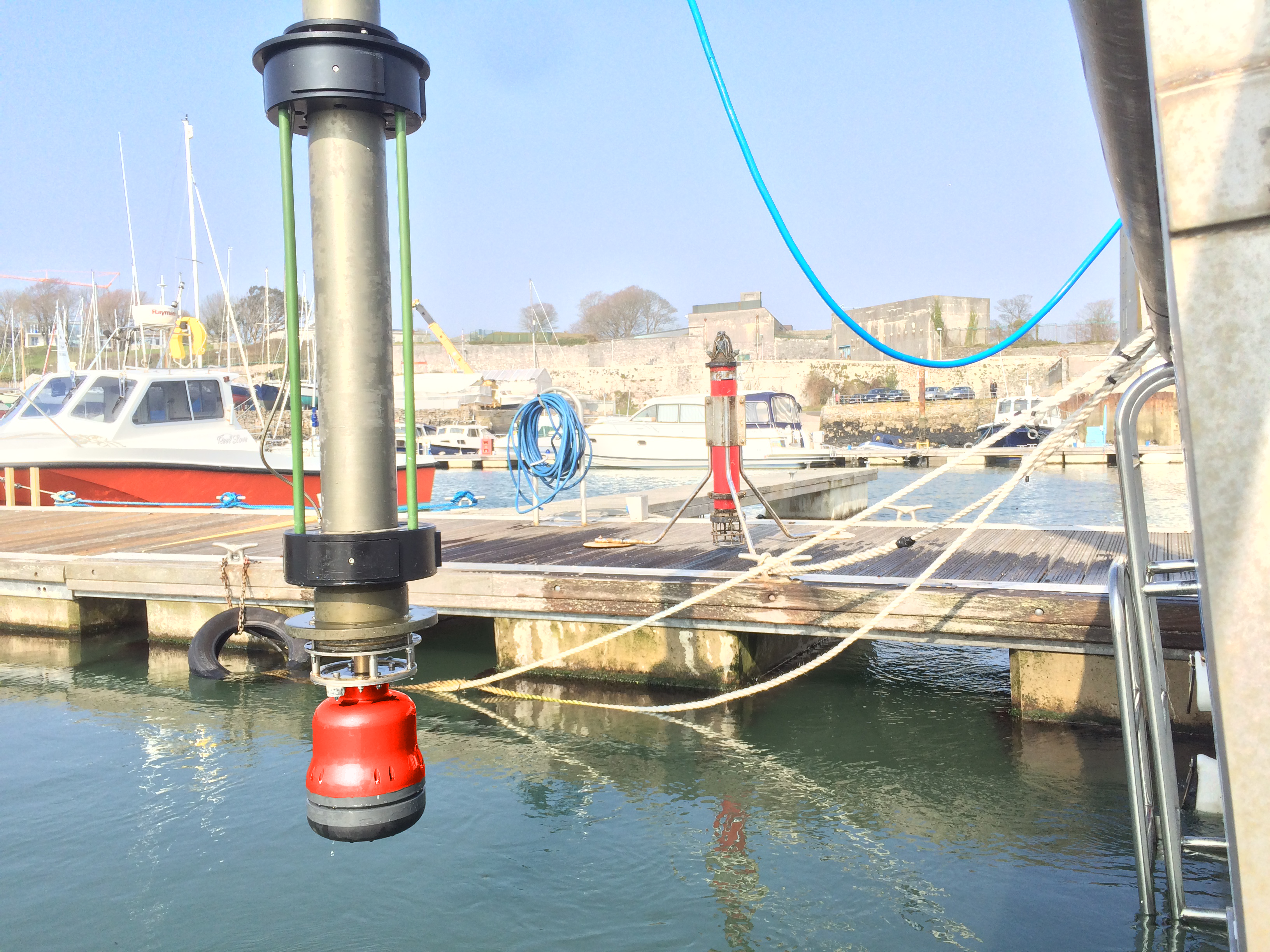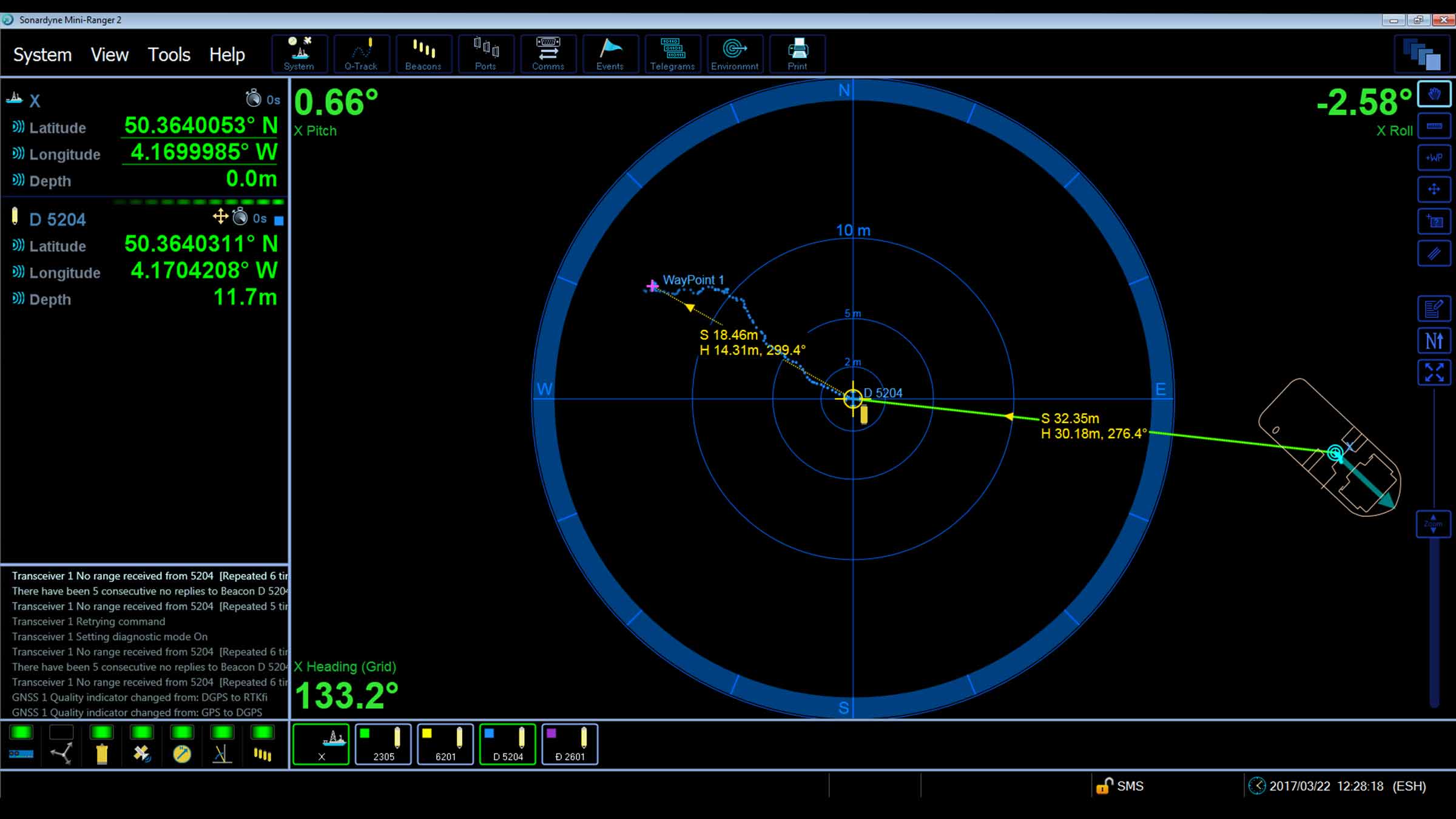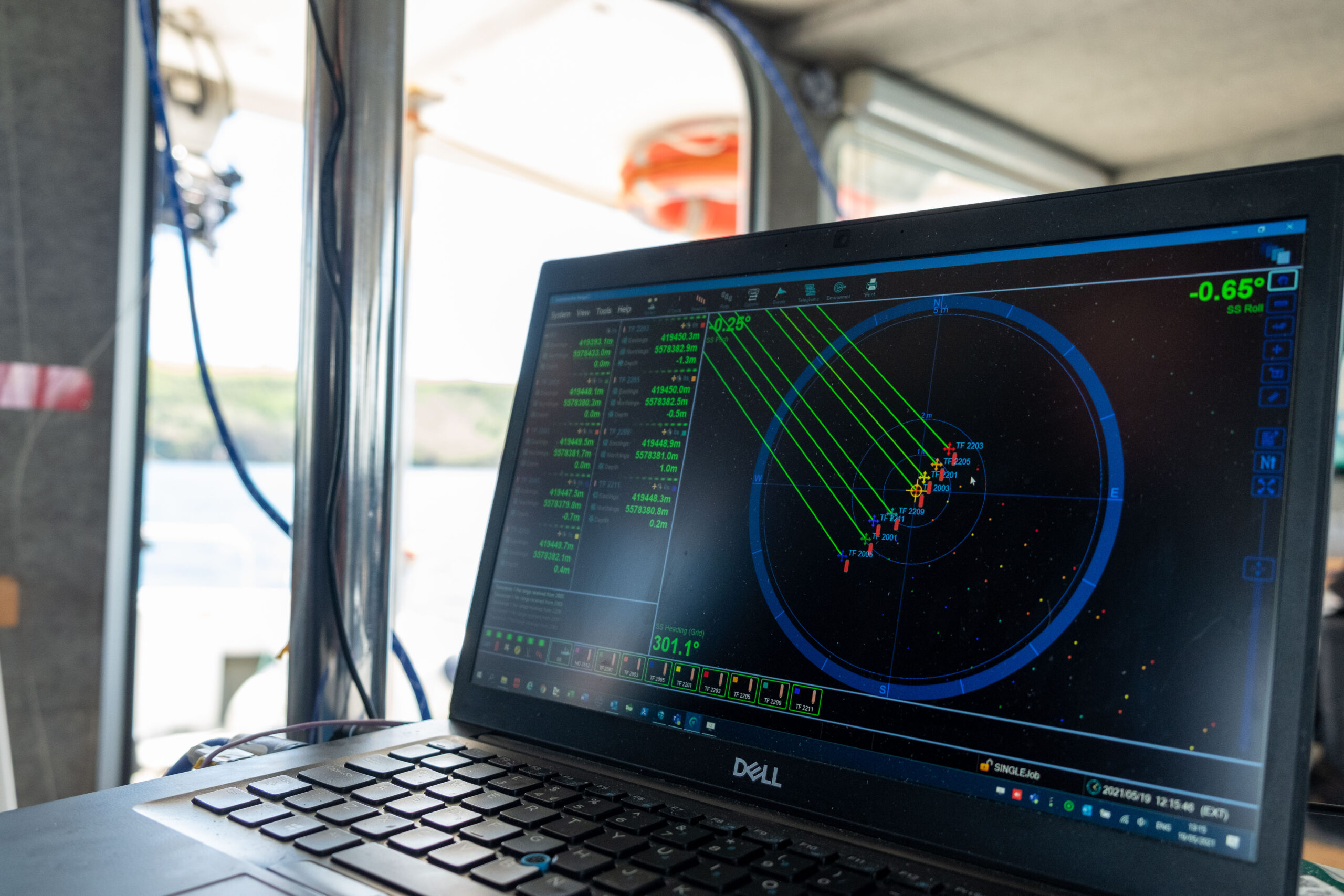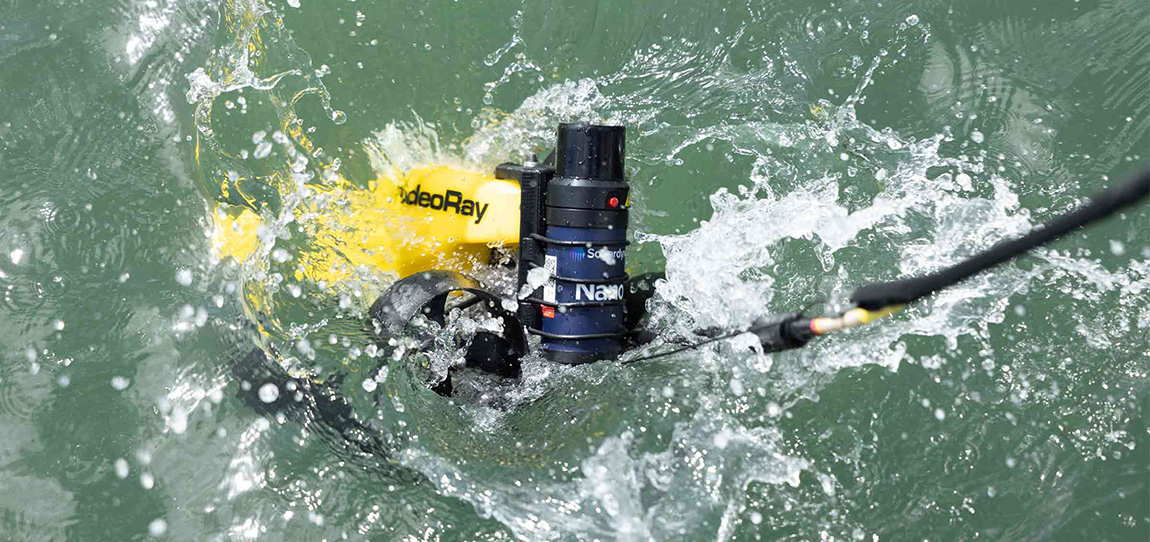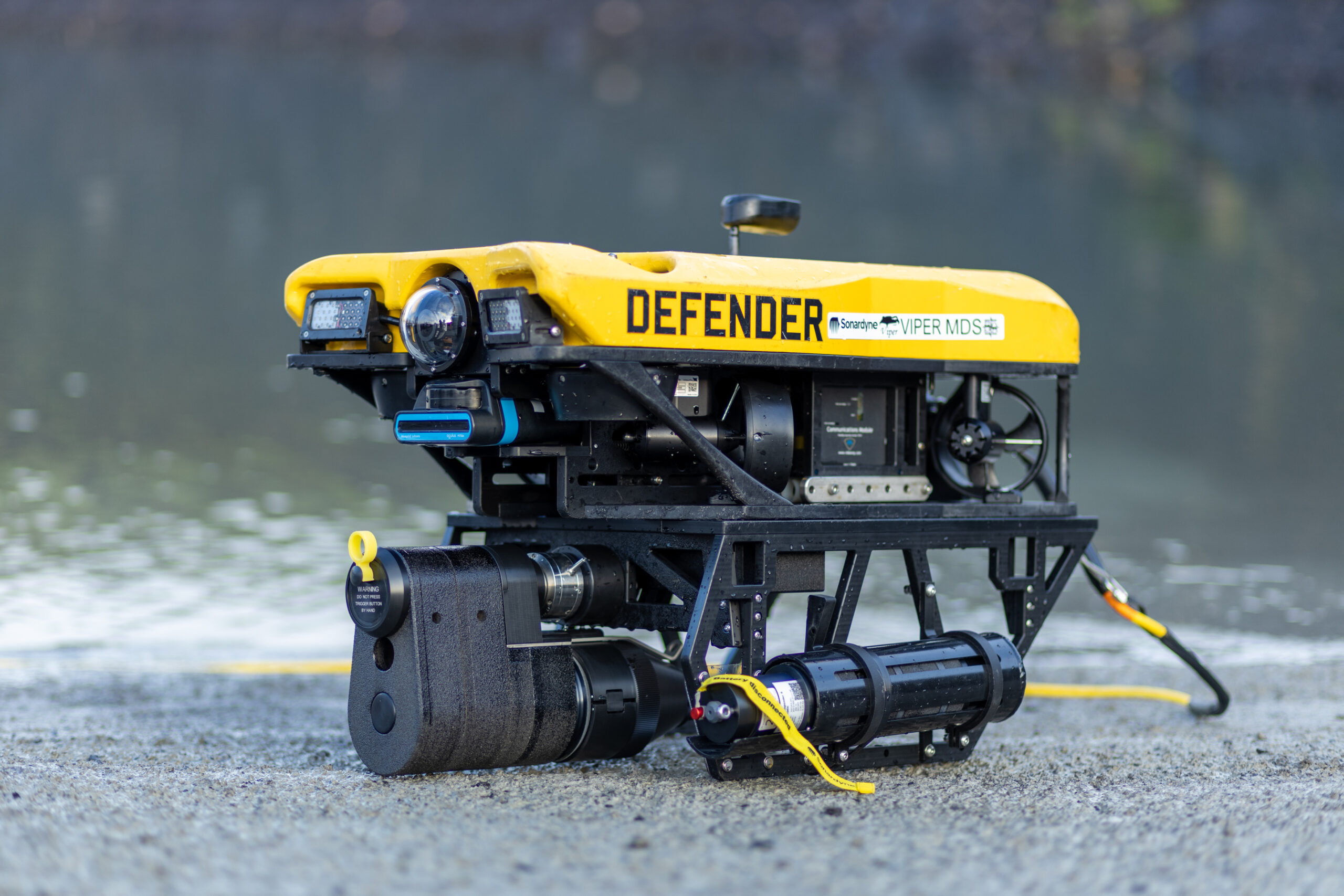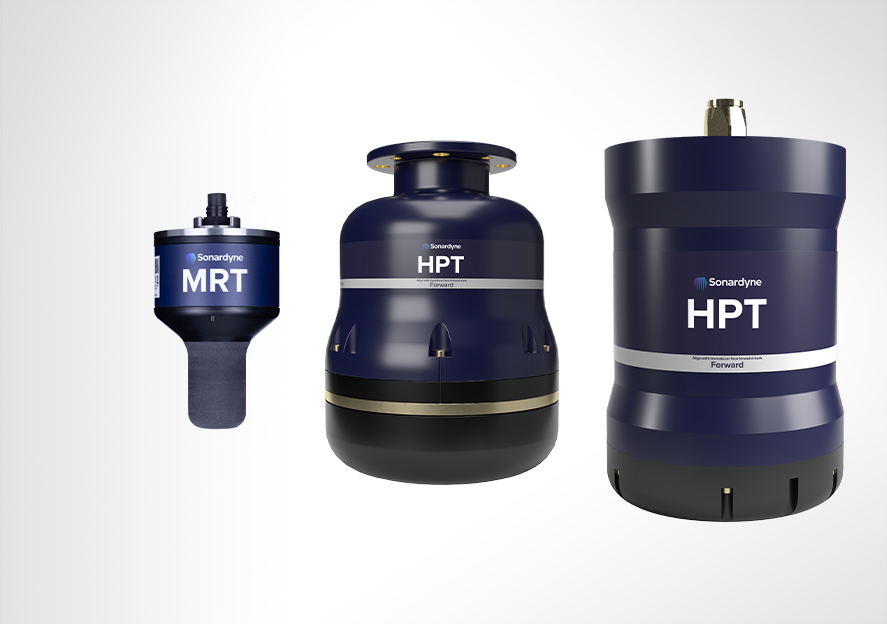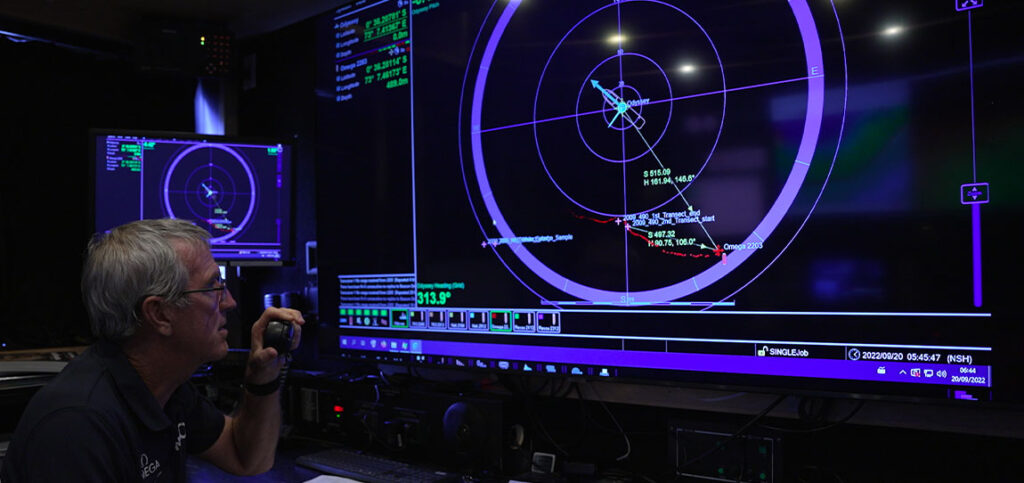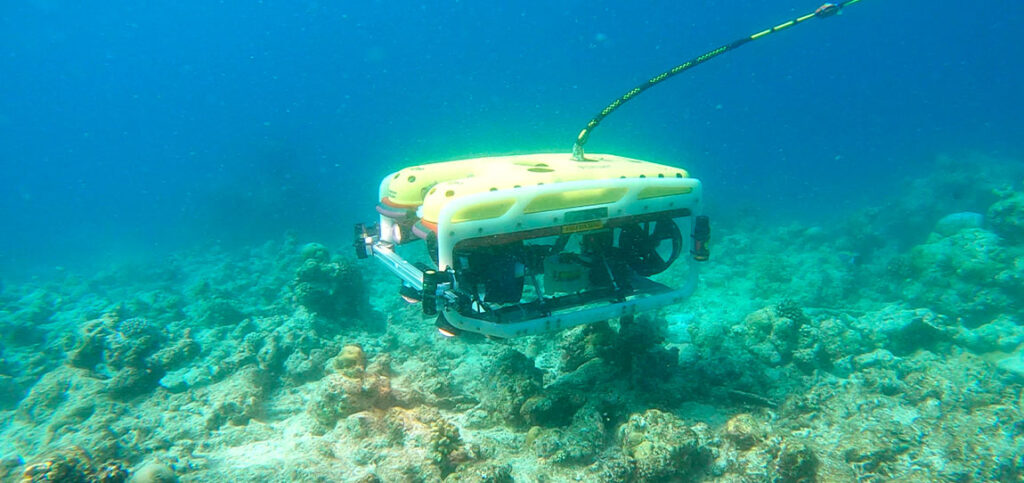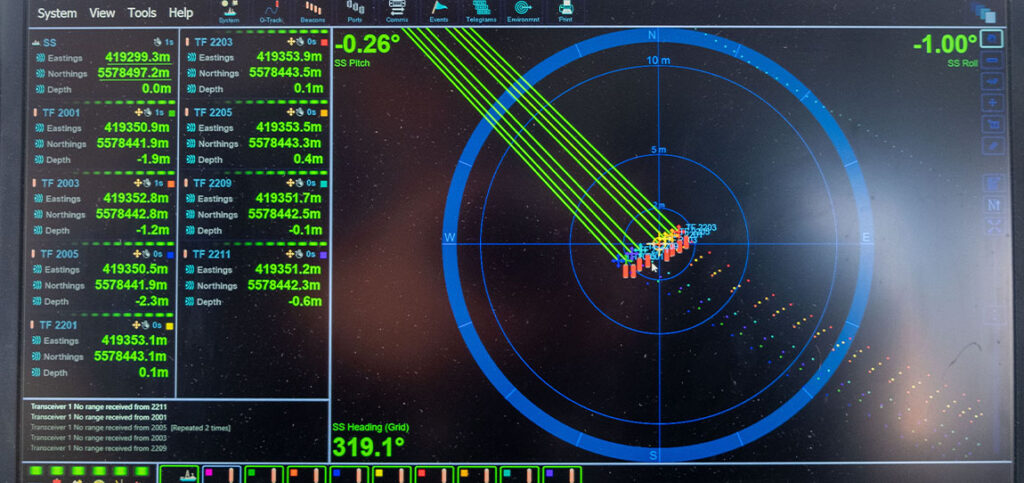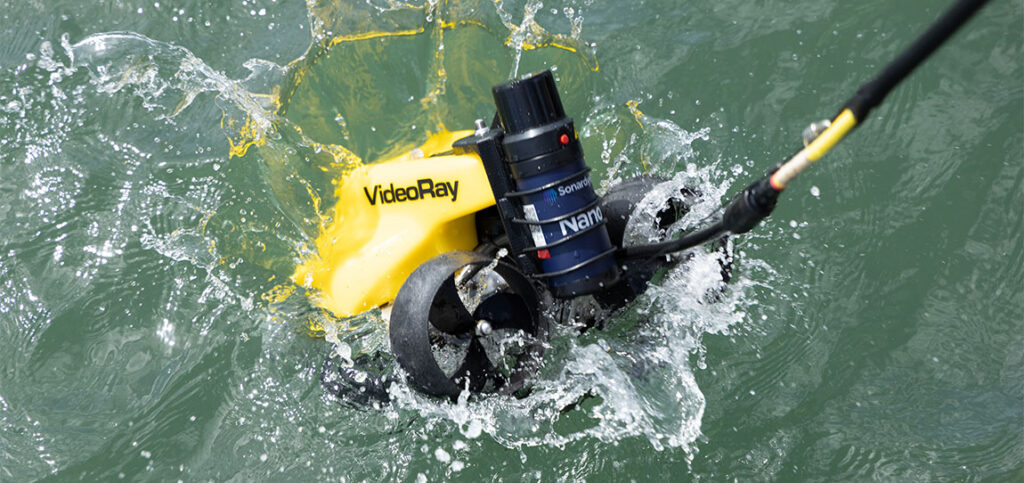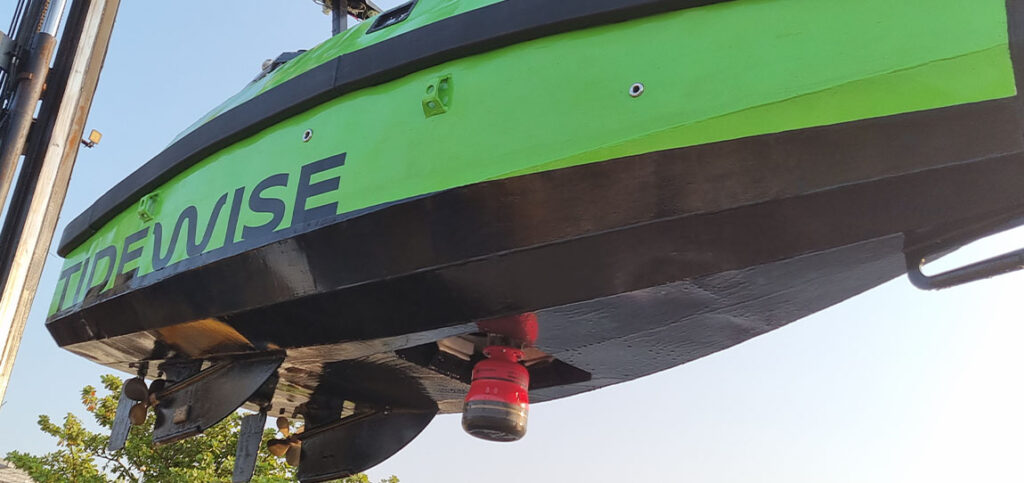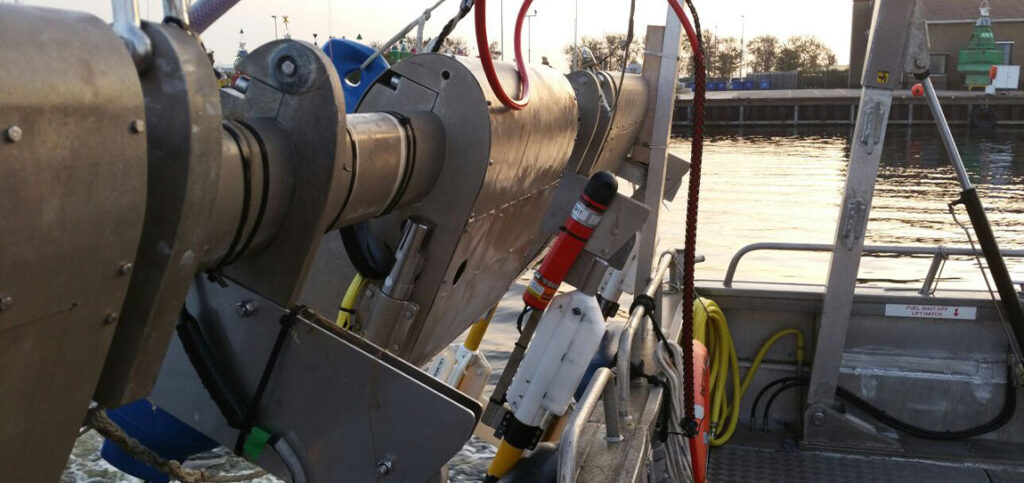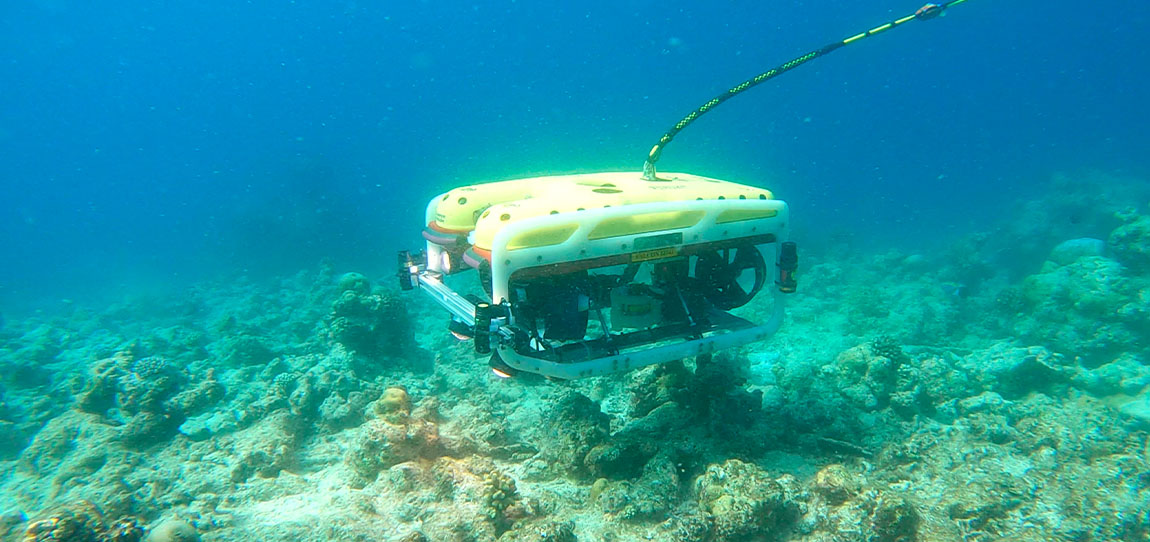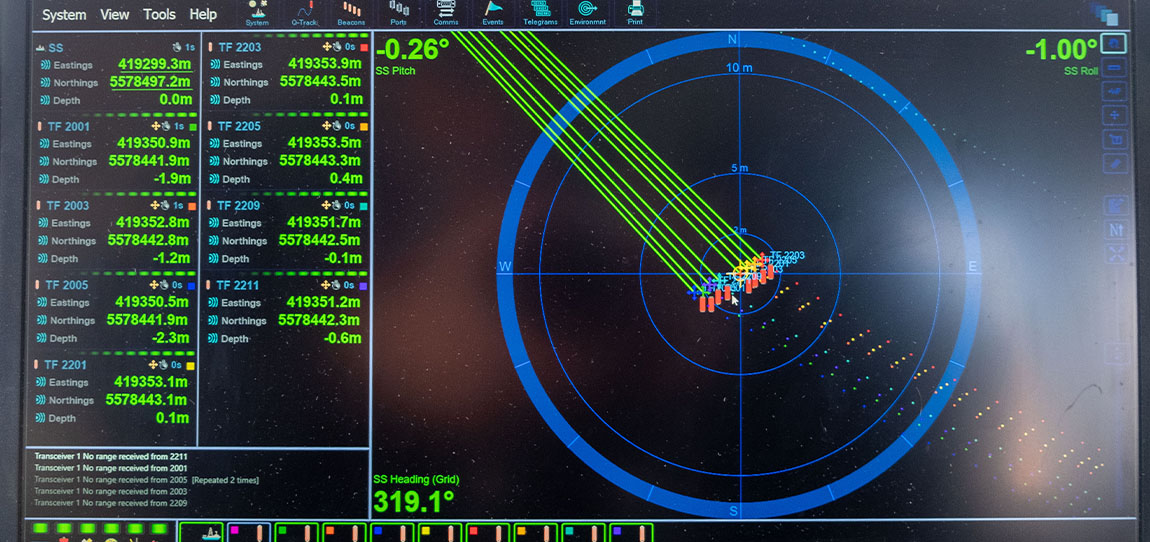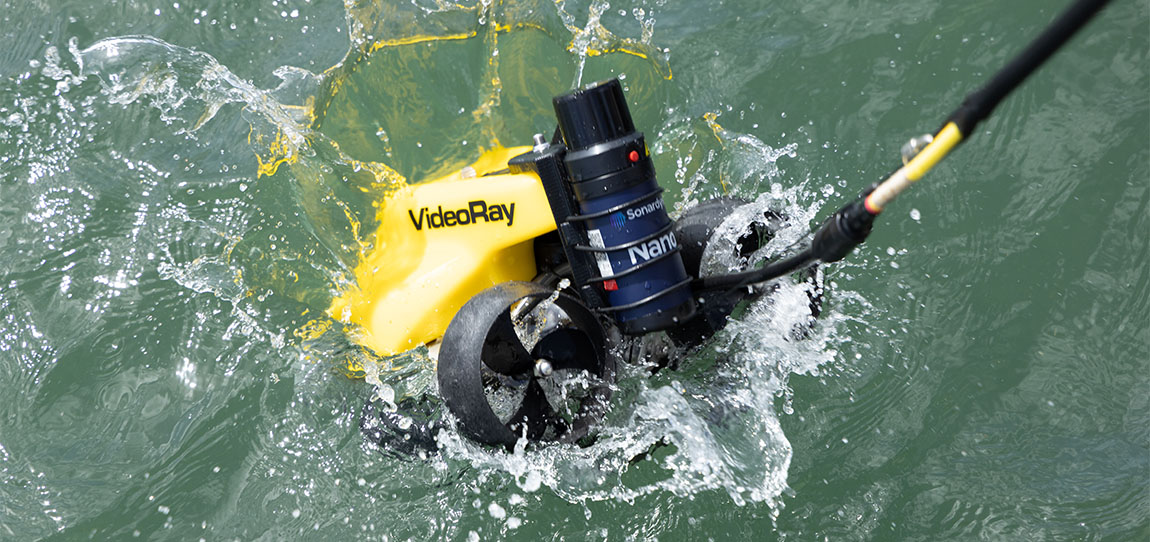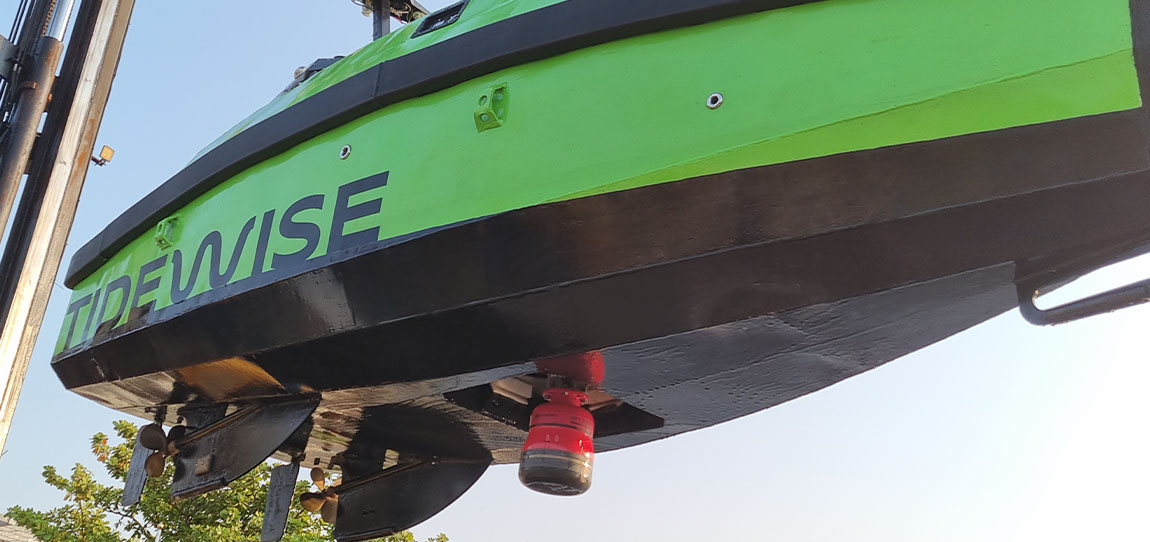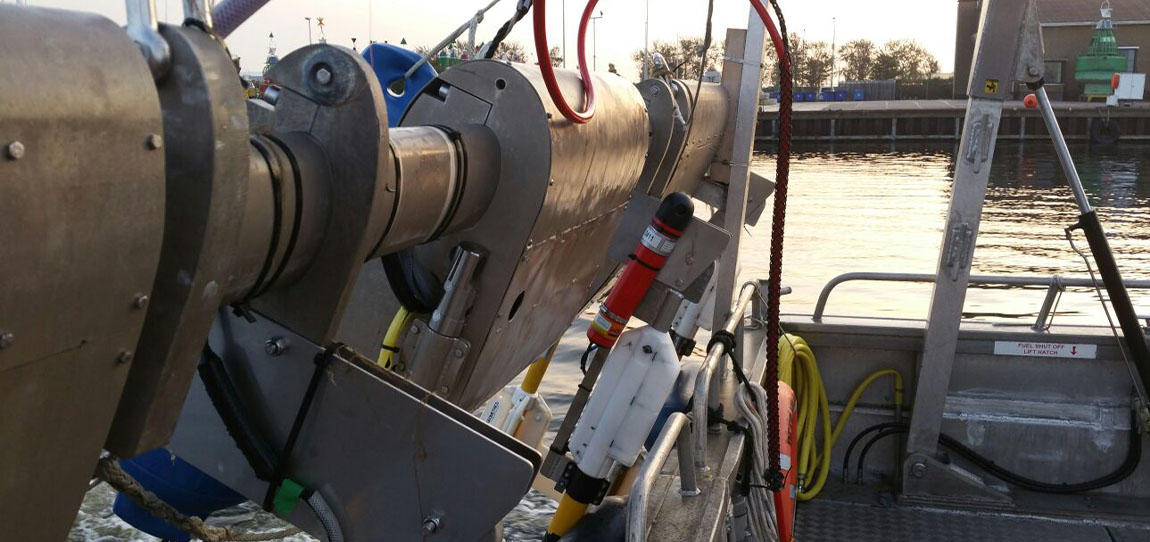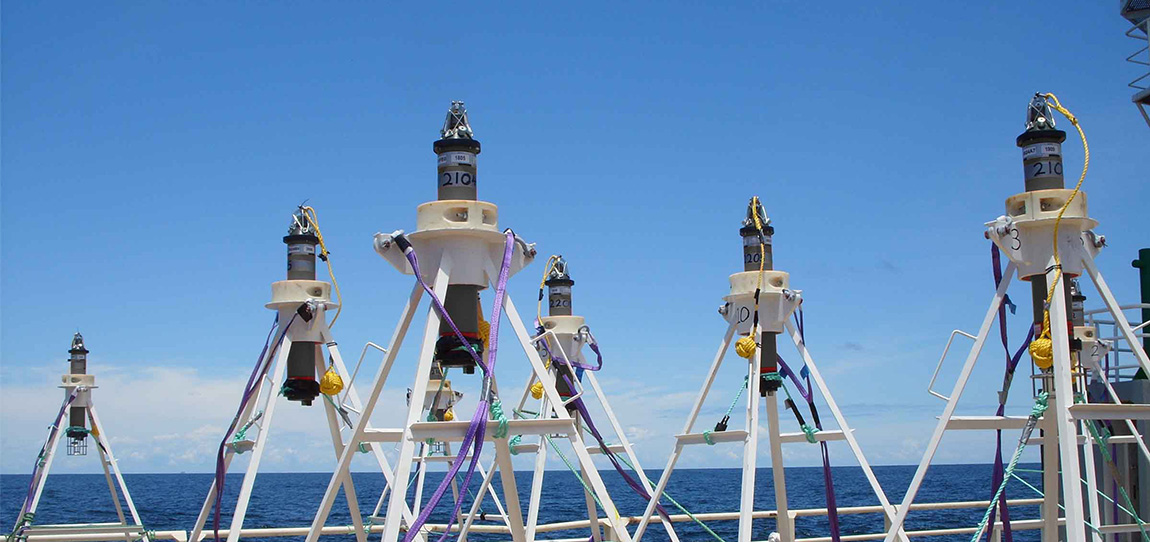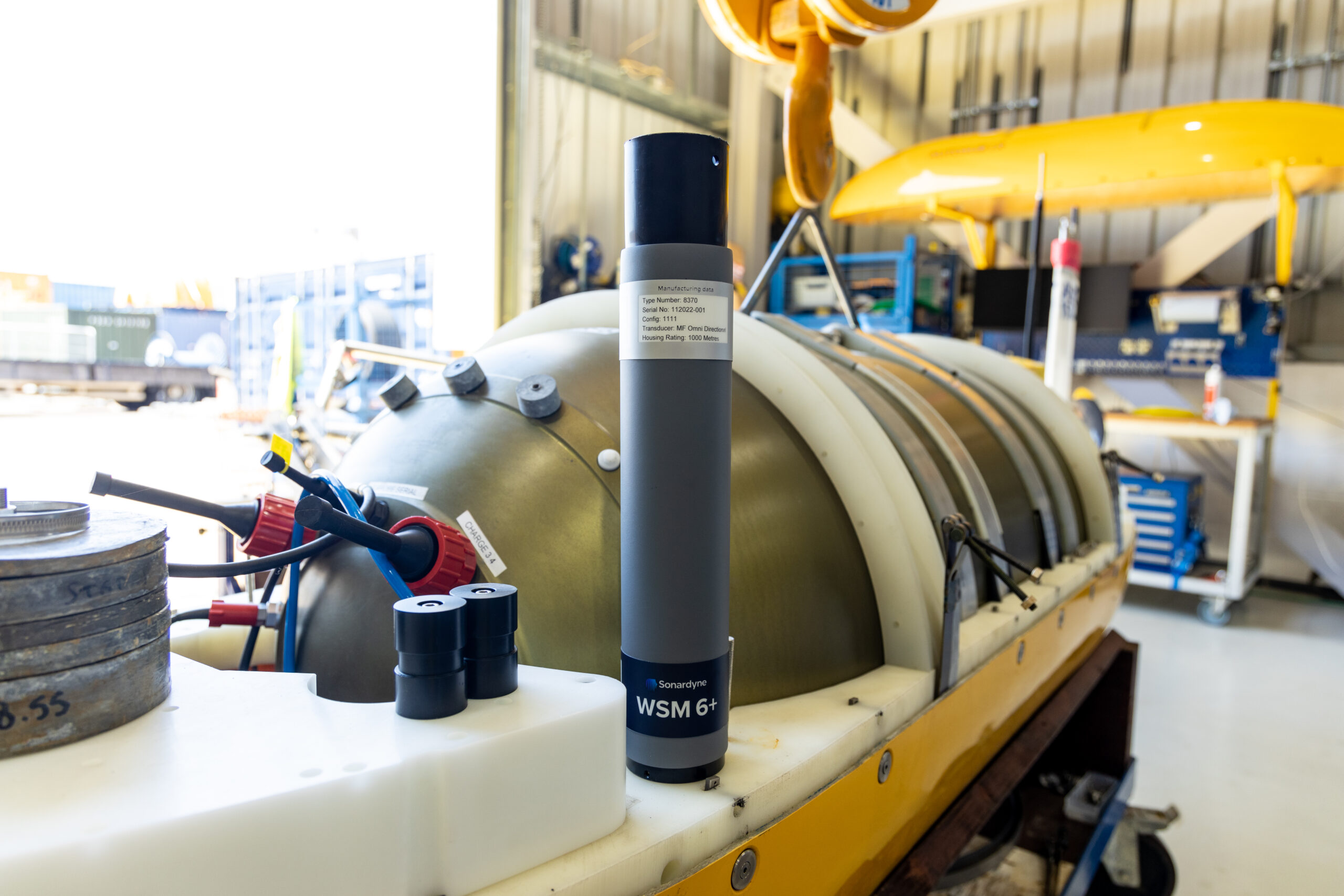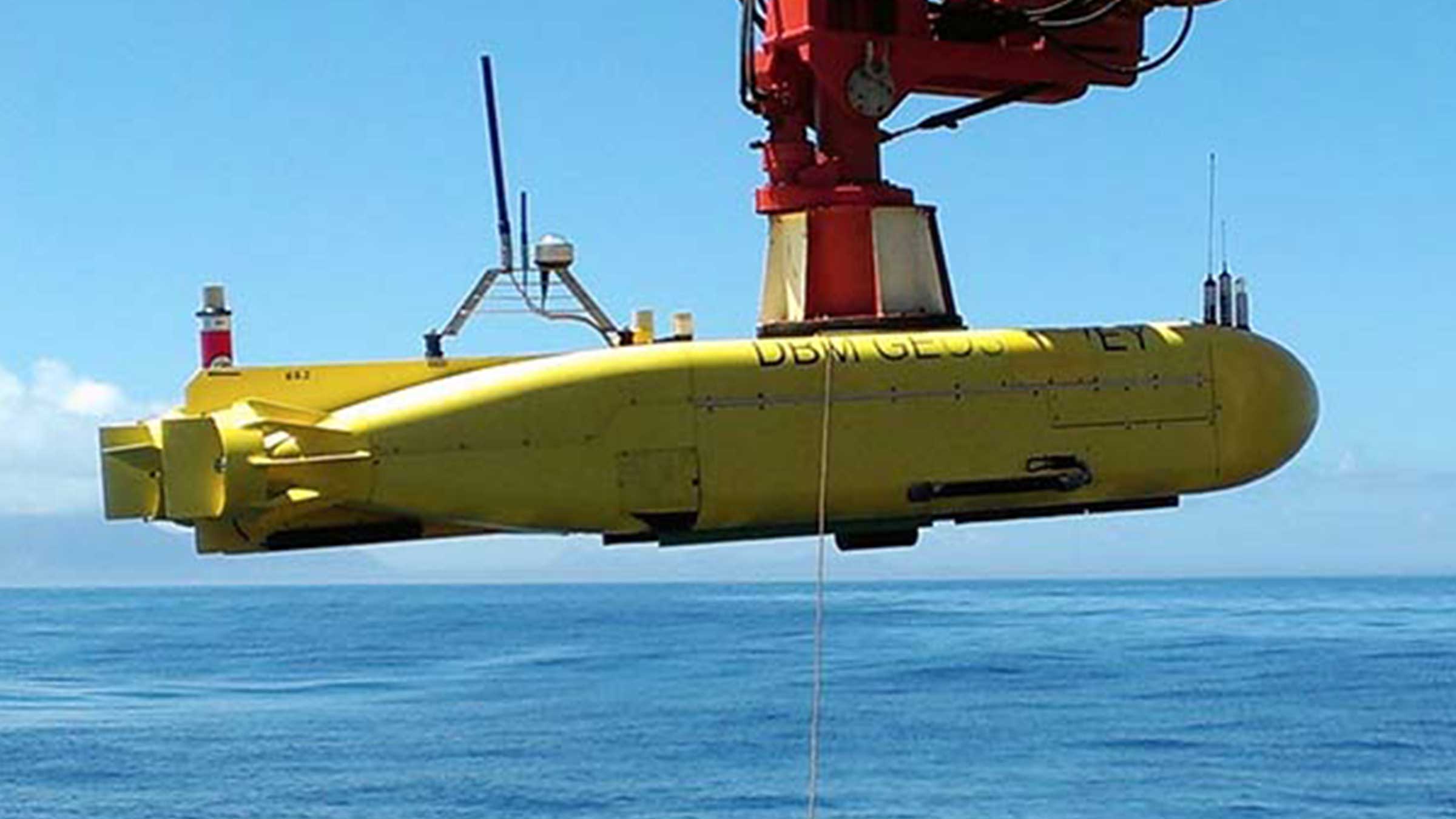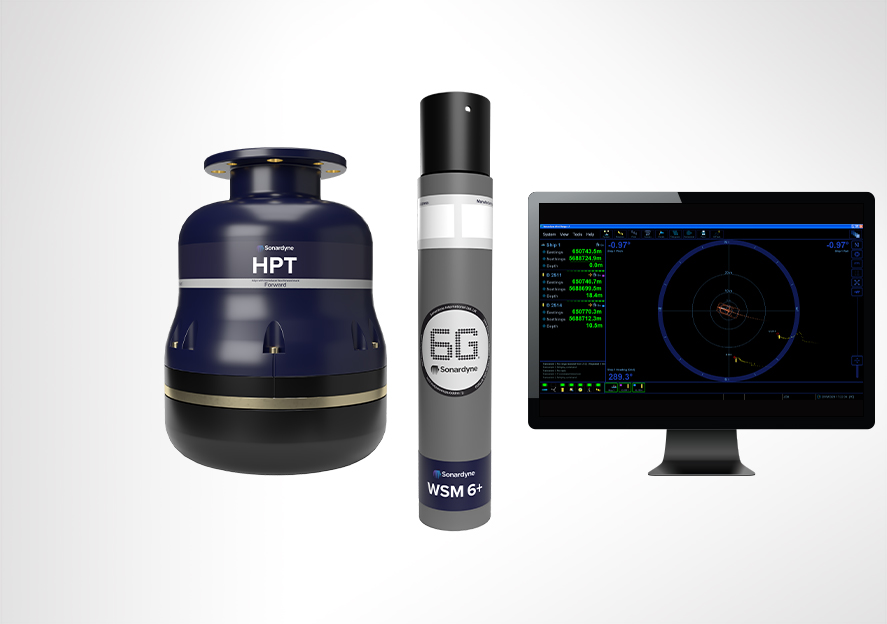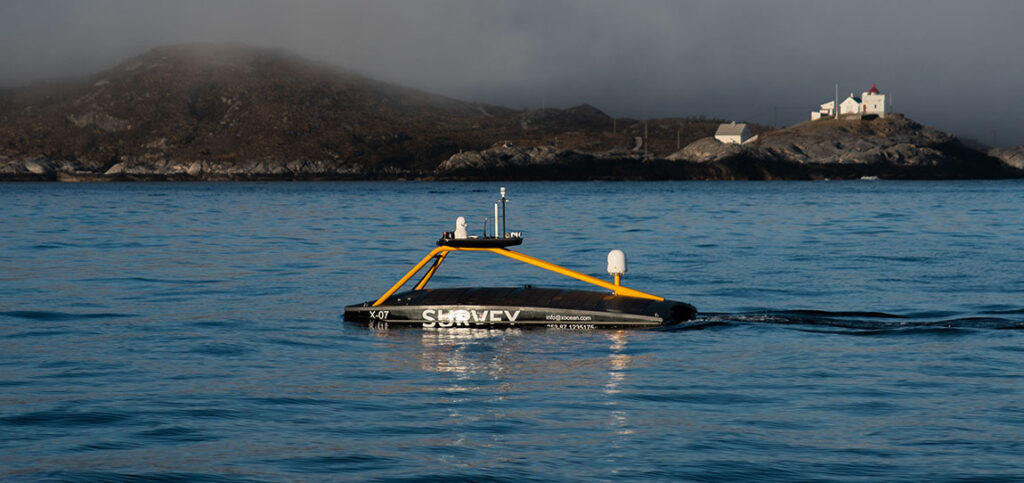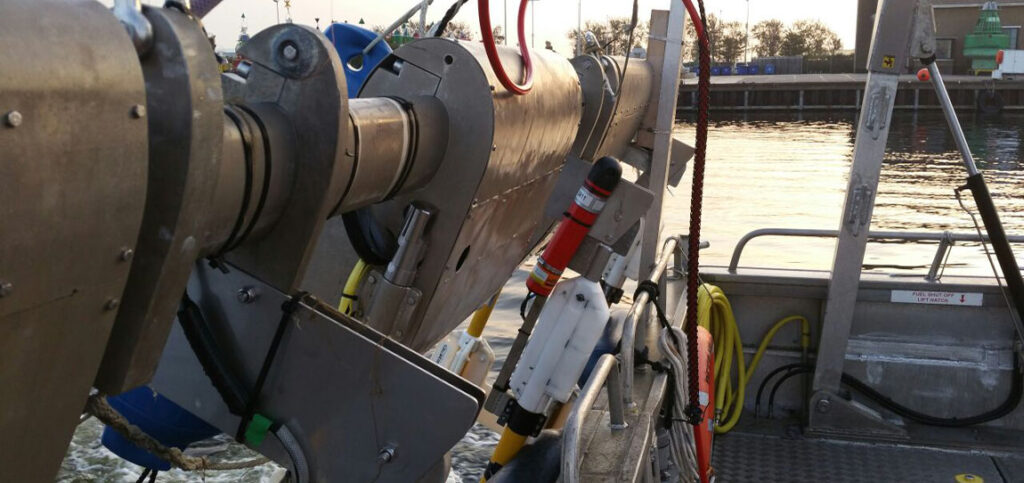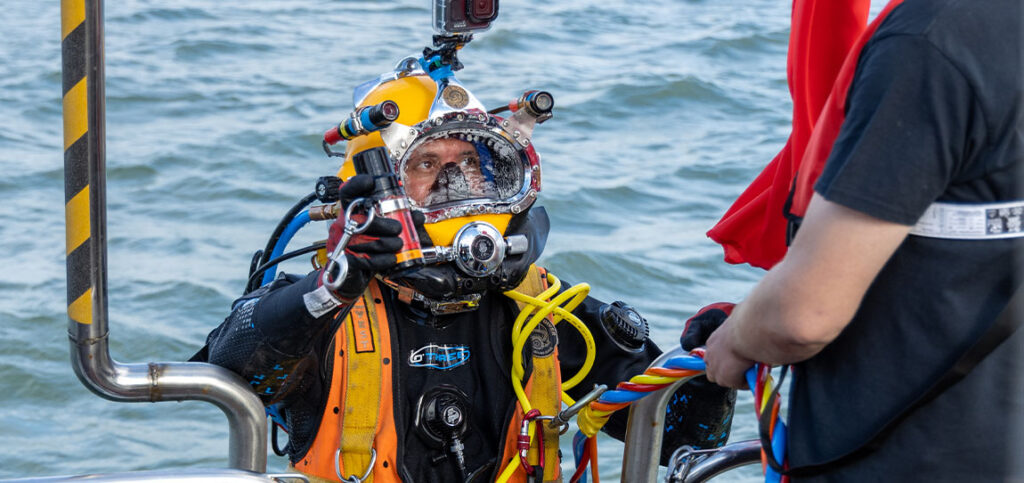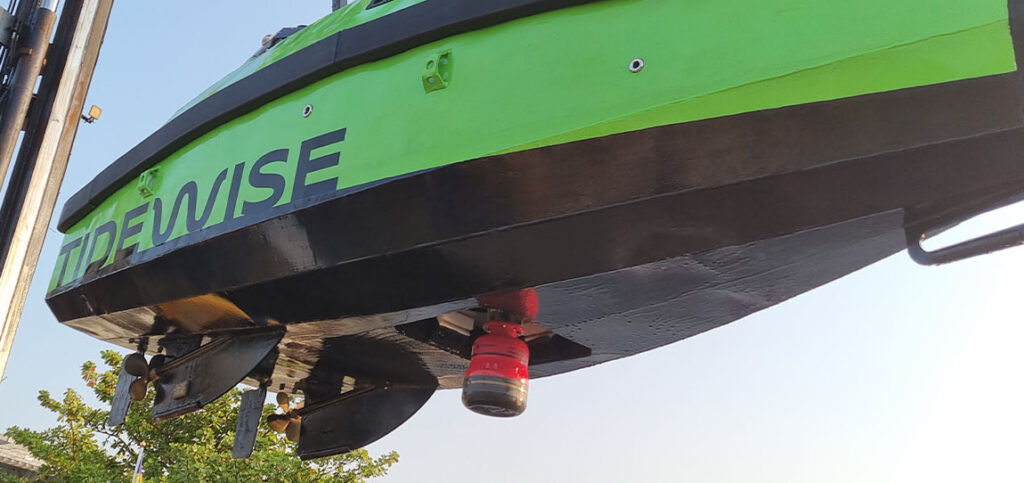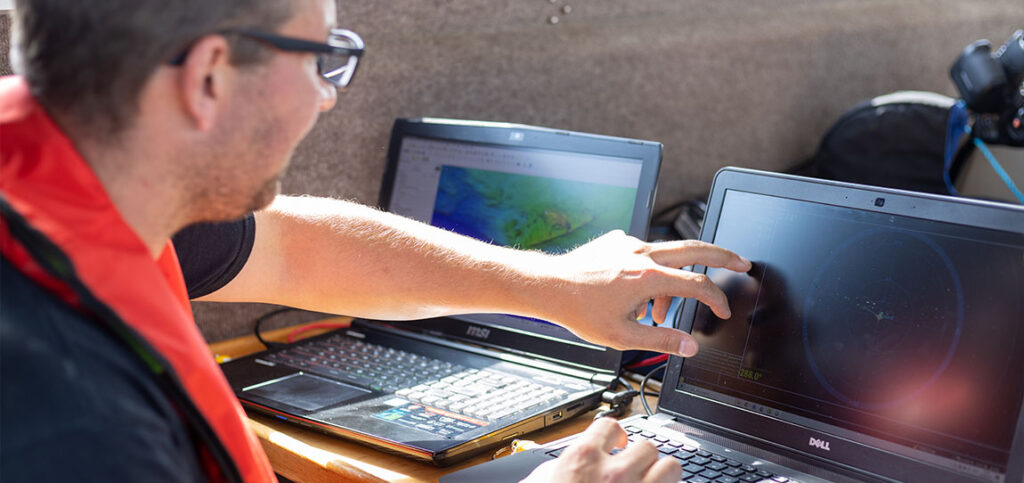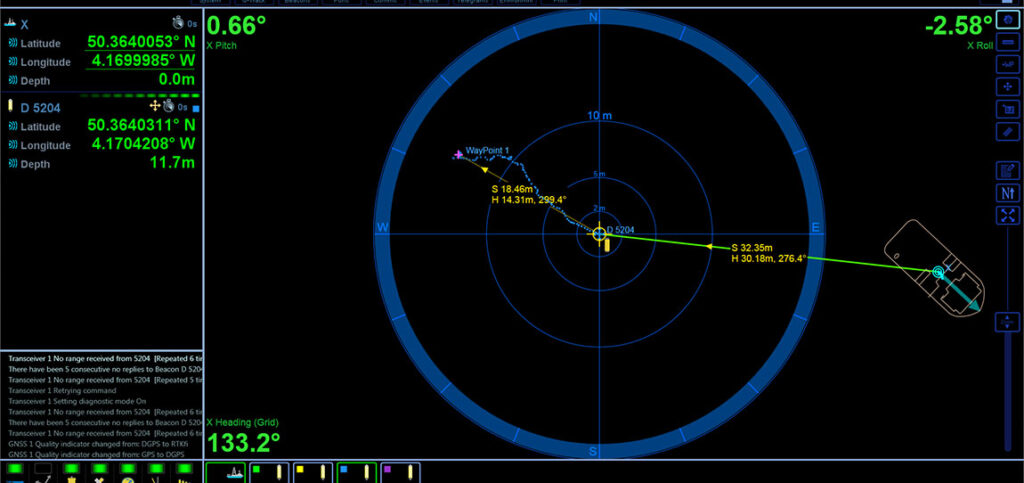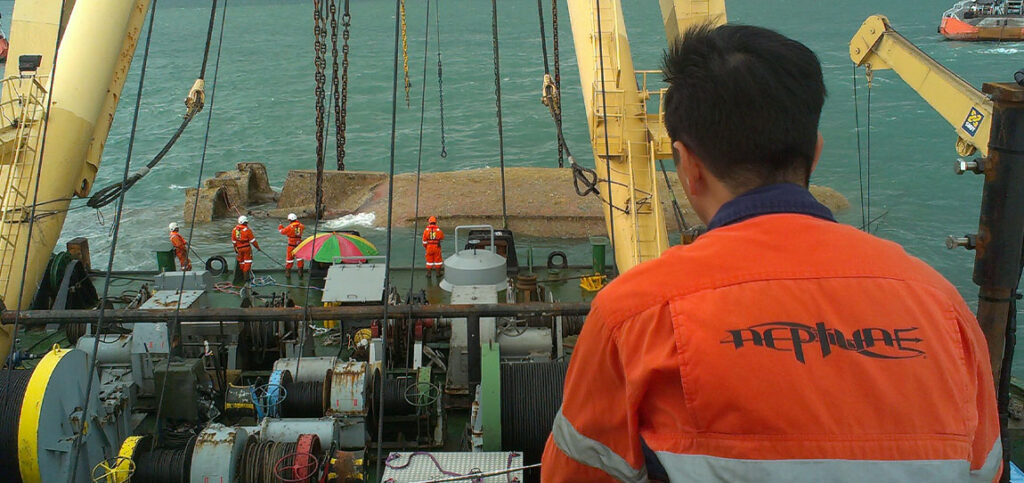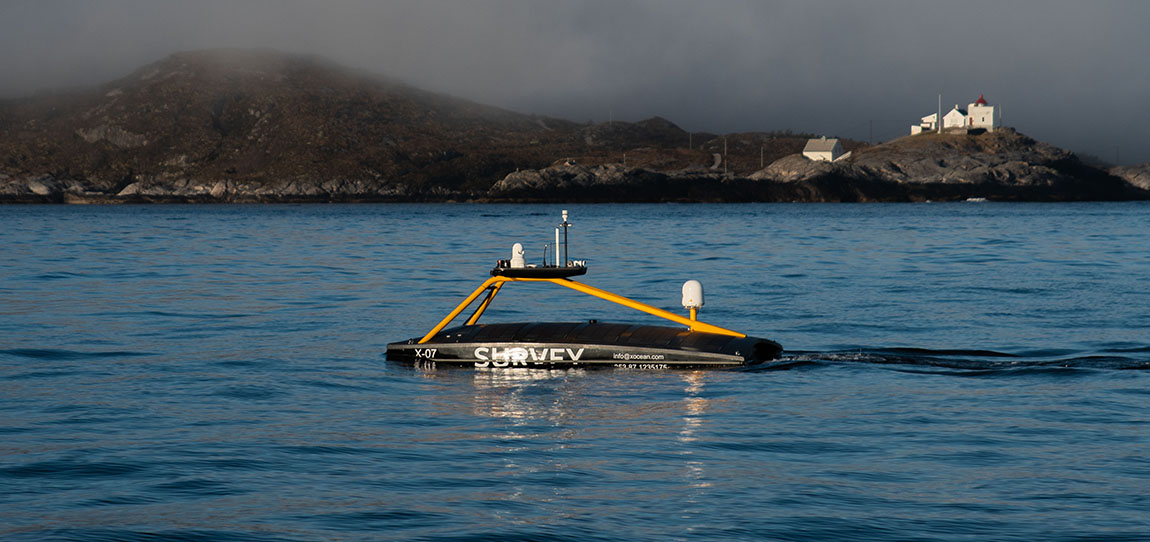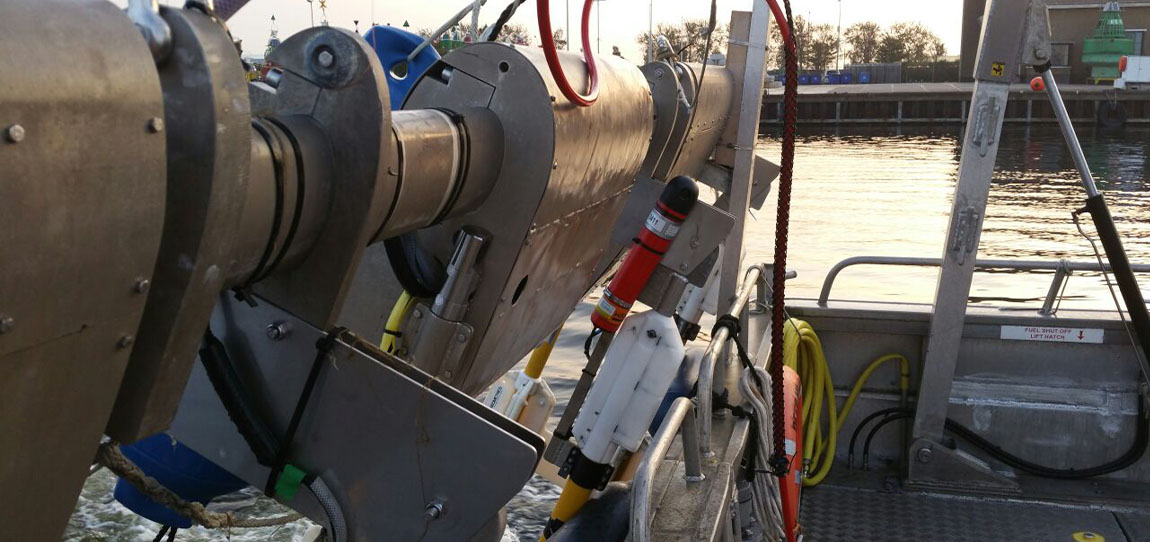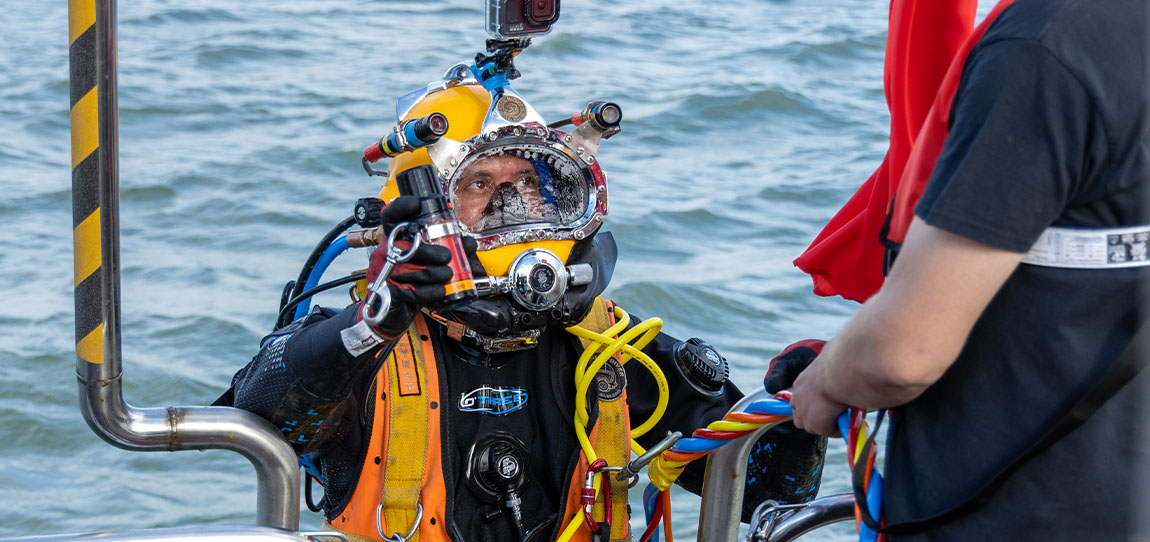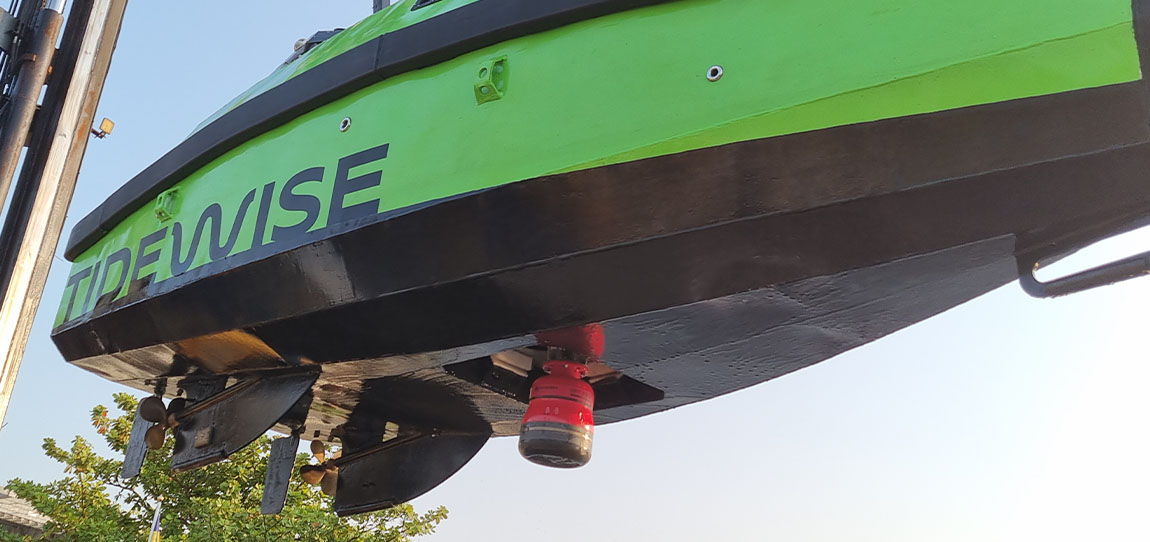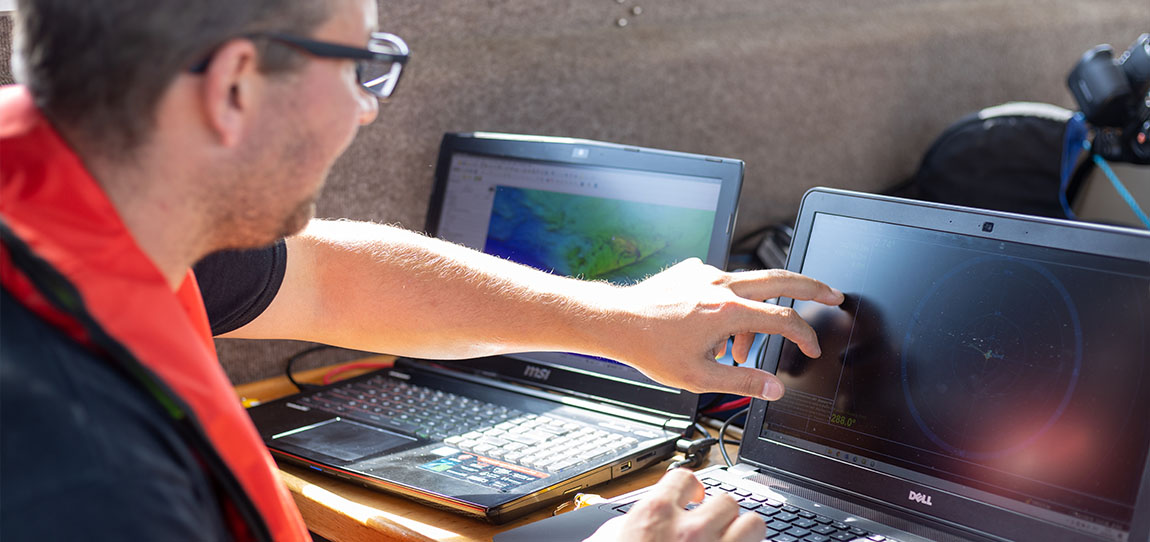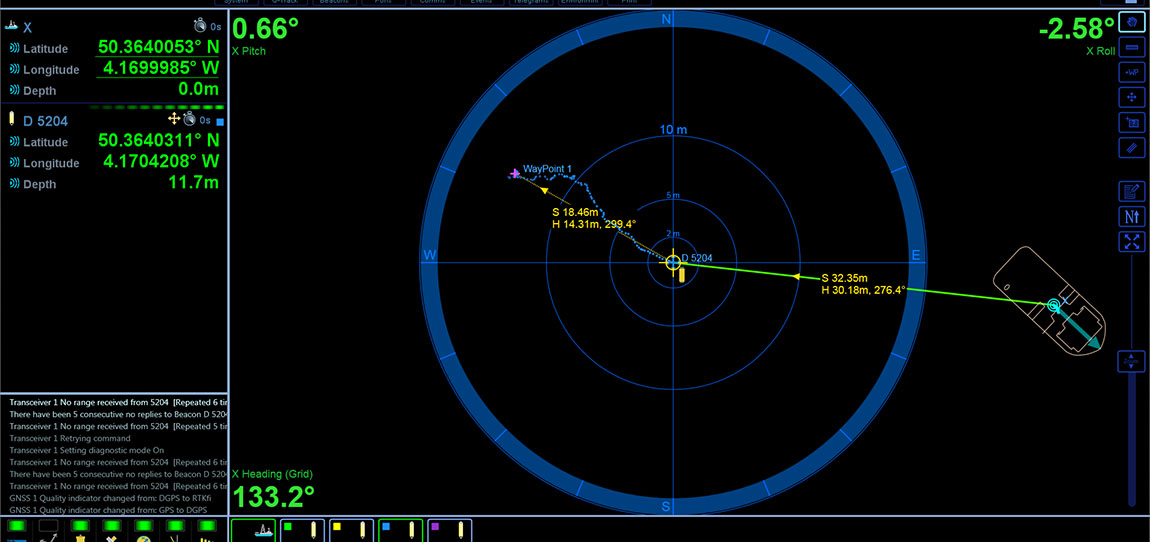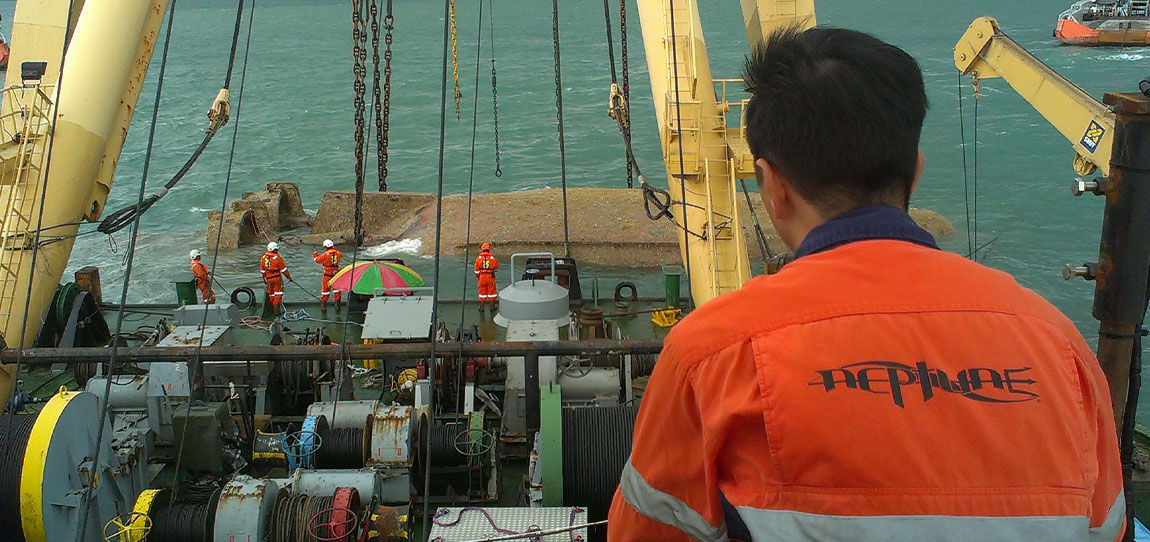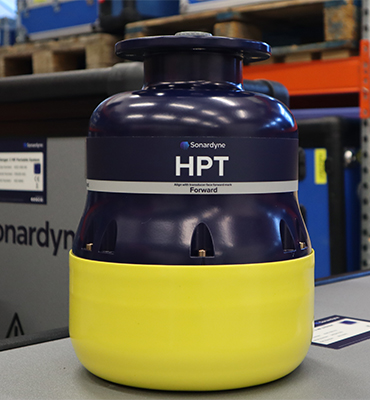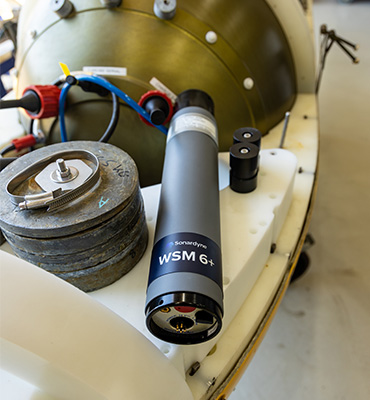Overview
Using a superfast processor to handle intensive workloads, Marine Computer is designed and configured to provide you with the best possible experience when using our suite of navigation, positioning and imaging software products, leaving you to concentrate on the job in hand.
However, you don’t have to be using Sonardyne software to use one. If you’re in the market for a robust and easily configured computer to run third-party software applications onboard your ship, survey boat or unmanned craft, Marine Computer is the perfect choice.
That’s because it’s certified to EN60945 and DNVGL-CG-0339 standards which means it meets regulatory requirements to be used on ships’ bridges and is able to withstand harsh operating environments and where constant high temperatures are present.
At a glance
- Choice of desktop or 2U rack mount configurations
- Fanless and temperature tolerant design withstands harsh marine operating environments
- Certified to EN 60945 and DNVGL-CG-0339 – use it on your bridge
- Intel 8th generation CPU runs intensive applications with ease
- Desk, console and rack mounting options
- Wide operating temperature range
Fanless computers like the Marine Computer are perfect for use in dirty or dusty marine environments where actively cooled systems could quickly clog up, overheat and fail. Inside is an Intel 8th generation processor and 512 GB industrial grade solid state disk. SSDs have no moving parts so are faster and more reliable than traditional hard disk drives. Temperature tolerant components contribute to its impressive wide operating temperature range.
All this makes the Marine Computer an extremely versatile and reliable tool in virtually any marine installation condition: desk mounted, in a small survey boat; within a ship’s bridge console; or, when supplied with a custom 2U chassis, mounted in a server room rack.
Watch our youtube video to learn more
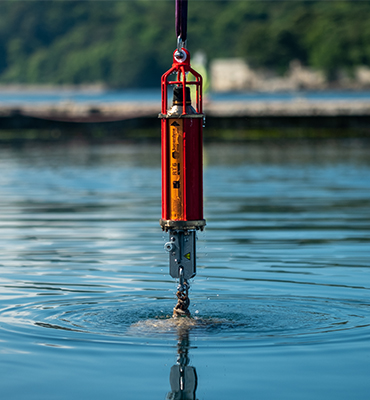
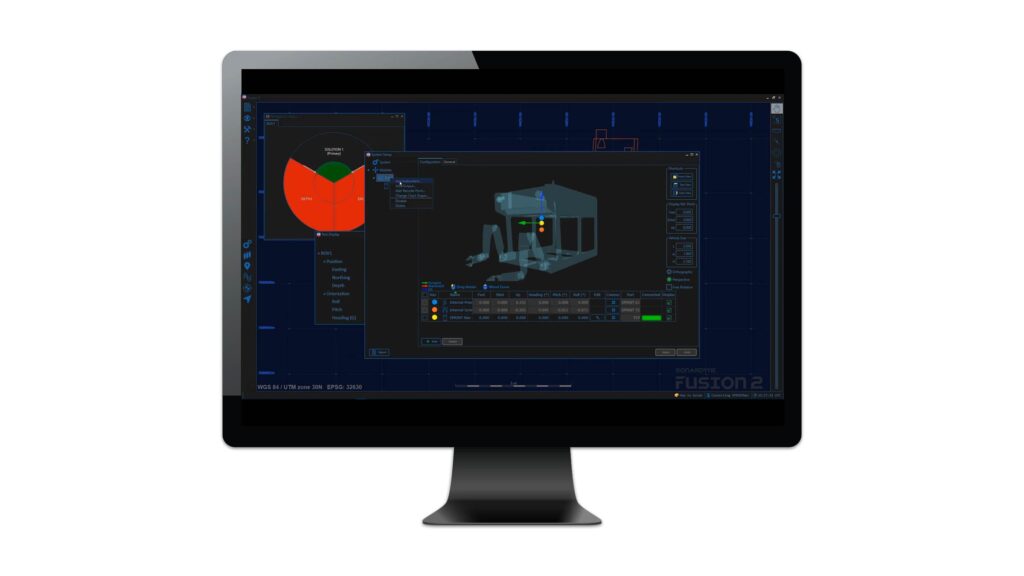
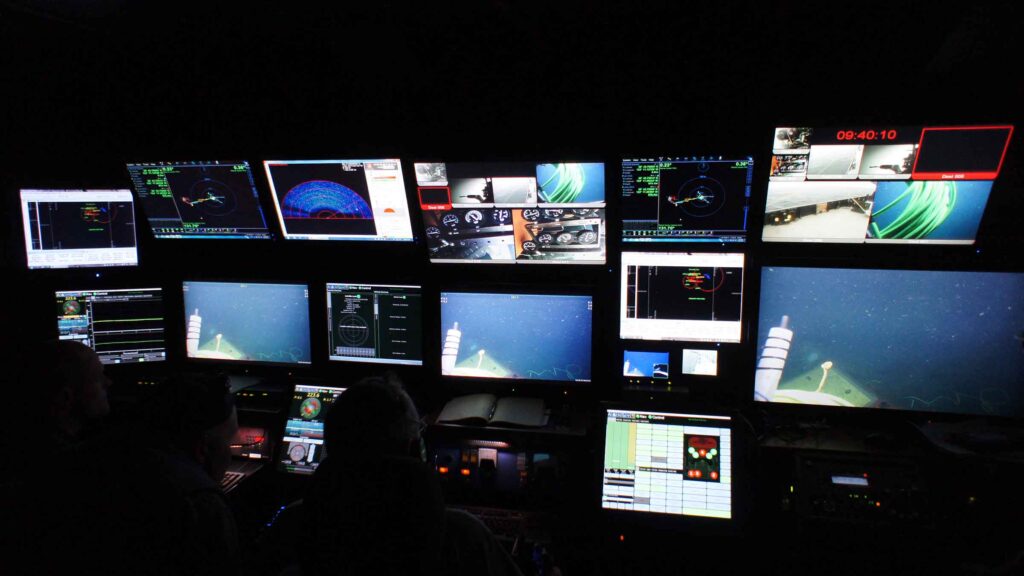
Specifications table
| Feature | Specification | |
|---|---|---|
| Processor | Intel i7 8700T Hexacore 2.4 GHz | |
| RAM | 8 GB 2666 MHz DDR4 RAM (non-ECC, un-buffered) |
|
| Hard drive | Single 512 GB industrial grade SSD | |
| Drives | Additional 2.5” SATA drive bay | |
| Ports | 1x DVI, 2 x DisplayPort 1.2, 2x USB 3.1 Gen2, 4x USB 3.0, 2x USB 2.0, 4 x RS232/422/485 serial ports (with auto flow control), 1x PS2 port, 1x Line in, 1x Mic in, 1x Phone jack 3.5mm, External Fan port, external power port, external reset port |
|
| Network | 2x 1 Gbps Ethernet | |
| Power in | Auto sensing ac voltage: 115/230 V, 60/50 Hz Max power input: 221 W Input current: 2 A @ 230 V |
|
| Audio | Realtek® ALC888 high definition audio | |
| Video | Supports triple independent display | |
| Environmental specifications | Operating temperature, storage temperature, relative humidity Vibration Shock |
-15 to 70ºC (5 to 158°F) -15 to 70ºC (5 to 158°F) 95% @ 70°C (non-condensing) 5 Grms, 5–500 Hz, 3 axes according to IEC60068-2-64 50 Grms, half-sine 11 ms duration according to IEC60068-2-27 |
| Intended use | Indoor use (including bridge), altitude up to 2,000 m, continuous operation | |
| EMC | Immunity & Emission EN 60945 & DNVGL-CG-0339 compliant |
|
| Dimensions (WxDxH) | Unmounted | 227 x 261 x 88 mm (8.9 x 10.3 x 3.5”) |
| Shelf mounted | 482 x 423 x 88 mm (19.0 x 16.7 x 3.5”) | |
| Weight | Unmounted | 4.3 kg |
| Shelf mounted | 10.5 kg | |
| Options | 265-5831 | 512 GB SSD |
| 650-0219 | Connector pack (1x dc power terminator, 1x SW reset terminator, 1x reset terminator, 1x fan terminator) |
Frequently asked questions
Datasheets
Manuals and quick start guides
Technical bulletin
Overview
NSH is a 2U high rack-mounted unit that is the interface between your in-water deployed transponders, vessel-mounted transceiver and Marine Computer which runs Ranger 2 USBL or Marksman LUSBL software applications.
In addition to accurately time-stamping incoming data from external devices such as gyro, VRU and GNSS, the NSH also provides power and communications for ship-borne acoustic transceivers such as HPT 5000 or HPT 7000.
A range of hardware interface cards are available for interfacing Sonardyne transceivers and external sensors. By simply plugging these cards into the rear of the unit, the role of the Navigation Sensor Hub can be transformed from supporting simple to complex acoustic operations.
The NSH includes an IEEE-1588/PTP precision time source that can be linked to GPS PPS input. Multiple NSHs automatically synchronise their clocks. All incoming data is time stamped to sub-microsecond accuracy – outgoing transmissions and triggers can be scheduled to the same precision.
Depending on the application (DP, drilling or survey operations), the NSH can be configured in stand-alone, dual-independent or dual-redundant modes.
At a glance
- Use it with Ranger 2 and Marksman LUSBL systems
- Interfaces vessel’s acoustic instruments with operating software
- Time stamps gyro, VRU and GNSS data
- Offers up to 16 serial ports (RS232/485)
- Configurable for dual independent applications
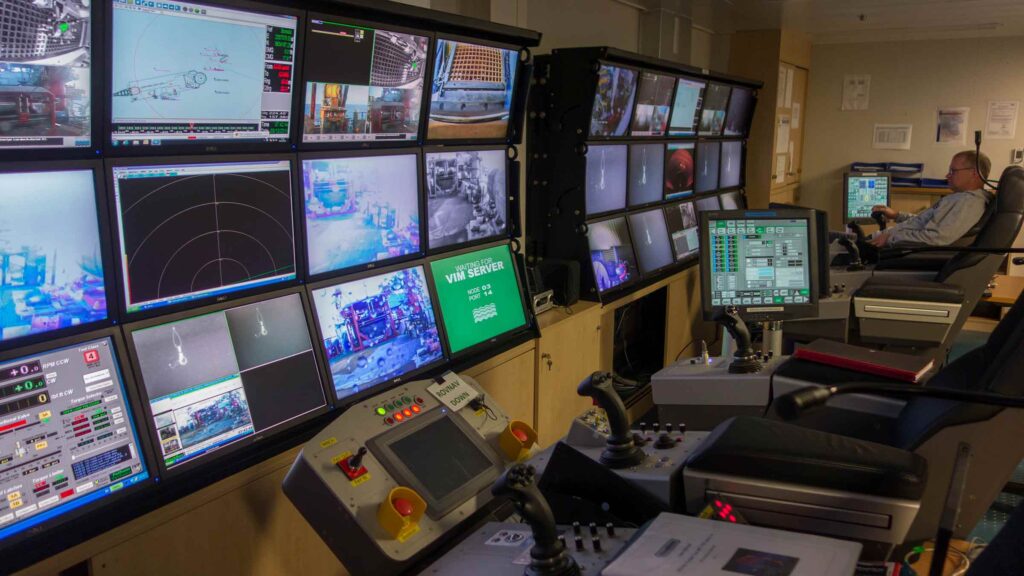

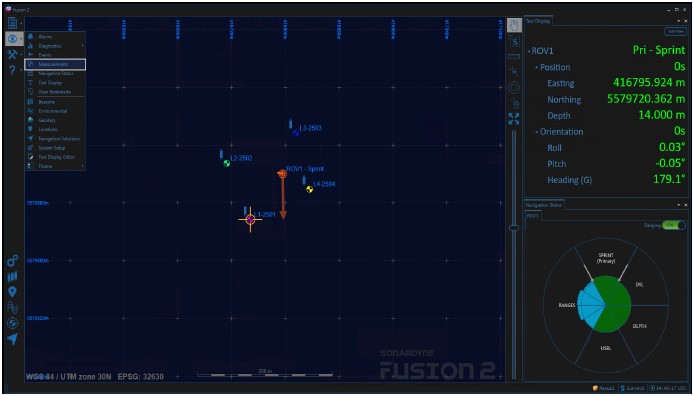
Specifications
| Feature | Type 8098 | |
|---|---|---|
| Processor | Freescale PowerQUICC™ II Pro Processor running at 1000 MIPS | |
| Memory | One single SO-CDIMM DDR2 PC4200 512MB Module | |
| Motherboard | Proprietary Sonardyne Type 8098-046 | |
| Ports and Connectors | AC IEC power connector socket | |
| 12 x Interface card connectors | ||
| Power Supply | Auto sensing ac input voltage: 100-240 V, 50/60 Hz | |
| Max current: 2 A @ 240 V, 4 A @ 110 V | ||
| Ave. operating current: 0.32 A @ 240 V | ||
| Environmental Specifications | Operating | -5 to 40°C (23 to 104°F) |
| Storage | -20 to 55°C (-4 to 131° F) | |
| Relative Humidity | 20–80% (non-condensing) | |
| Shock | 10 G acceleration peak to peak | |
| 5–17 Hz, 0.1” double amplitude displacement | ||
| 17–640 Hz, 1.5 G acceleration peak to peak | ||
| Safety | Complies with EN61010-1 | |
| EMC | Complies with Immunity & Emission requirements of EN60945 | |
| Dimensions (Length x Width x Height) | 384 x 482 x 88 mm (15.1 x 18.9 x 3.4”) |
Frequently asked questions
Software and firmware
Software and control hardware
Datasheets
Manuals and quick start guides
Did you know?
NSH can be used with Ranger 2 and Marksman LUSBL systems
Overview
Built around our field-proven 6G hardware and Wideband 2 acoustic signal platforms, Modem 6 surface units support secure subsea-to-surface wireless data transfer at speeds between 200 and 9,000 bps.
This makes them ideal for applications such as: near real-time data streaming, data harvesting from third party sensors or subsea command and control of equipment.
Modem 6 acoustic modems are aimed at simple data transfer applications which do not require the more complex functions such as integrated (USBL) positioning, on-board sensors or complex multi-node array telemetry. If you need any of these capabilities, or an OEM solution which you can integrate into your own instrument or vehicle, our application experts will be happy to discuss your requirements and identify the right solution for you.
We offer a variety of surface deployed acoustic Modem 6 to suit any operational deployment scenario and data transfer mission. You can mount them on a variety of surface platforms ranging from buoys to all sizes of vessels – both manned and uncrewed – to interact with any of our subsea deployed Modem 6 instruments.
At a glance
- Transfers data at up to 9,000 bps
- Highly reliable – built around our Wideband 2 acoustic and 6G hardware platform
- Options for buoys, uncrewed surface vehicles and ships
Modem 6 Transceiver
Manufactured in Aluminium Bronze, the Modem 6 Transceiver is intended to be fitted temporarily or permanently to a vessel’s through-hull or over-the-side pole or mounted in a dunker cage assembly. The unit uses the same array as our HPT 5000/7000 transceiver so can be upgraded in the field to offer this capability if integrated communications and target tracking is required. As standard, the unit is supplied with Surface Interface Unit (SIU), deck cable, 100 m cable drum and a dunker cage which allows deployment over the side in the absence of a through-hull deployment pole.
Modem 6 Dunker
Modem 6 Dunker is a popular option for low-logistic data recovery missions using survey vessels-of-opportunity. Depth rated to 1,000 m, it can also be fitted to ROVs for close range data transfer from seafloor sensors. It’s available in MF and LMF, with omni-directional or directional transducer designed for excellent horizontal and shallow water communication. Modem 6 Dunker is powered using a supplied Surface Interface Unit (SIU).
Modem 6 Mini Dunker
Modem 6 Mini-Dunker is our smallest topside option. It is compact, easy-to-mount and suitable for transmission and recovery of data from a wide range of sensors including: current profilers, temperatures, depth and custom instrumentation. The Modem 6 Mini-Dunker is available in MF with an omnidirectional transducer designed for excellent horizontal and shallow water communication. The surface system comprises of a Modem 6 Mini-Dunker, Surface Interface Unit (SIU) and 20 m deck cable.
All of our family of underwater Modem 6 instruments benefit from same mechanics and electronics you’ll find in our other 6G transponders. These are trusted by leading offshore operators to perform in the most demanding marine environments and operational scenarios.
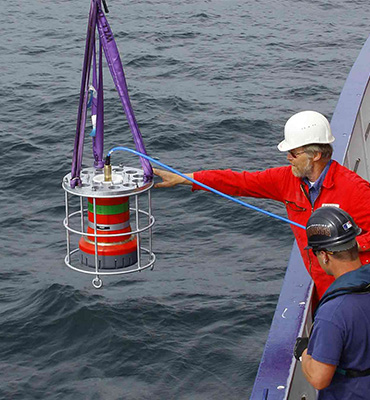
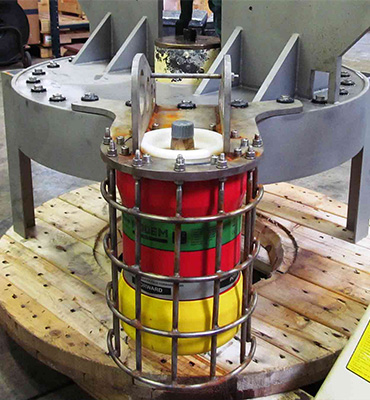
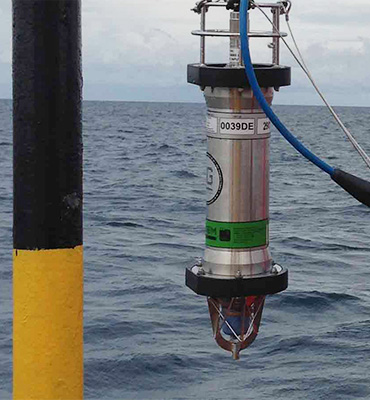
Specifications table
| Feature | Type 8244-3151 | Type 8244-3155 | Type 8307-1351 | Type 8307-1353 | Type 8307-1355 | Type 8307-1356 | Type 8182-0001 | Type 8193-0012 |
|---|---|---|---|---|---|---|---|---|
| Depth Rating | 3,000 m | 3,000 m | 1,000 m | 1,000 m | 1,000 m | 1,000 m | Up to 7,000 m (operating range) | Up to 12,000 m (operating range) |
| Operating Frequency | MF (20–34 kHz) | LMF (14–19 kHz) | MF (20–34 kHz) | MF (20–34 kHz) | LMF (14–19 kHz) | LMF (14–19 kHz) | MF (20–34 kHz) | LMF (14–19 kHz) |
| Beam Shape | Omni-directional | Omni-directional | Omni-directional | Directional | Omni-directional | Directional | Omni-Directional | Directional |
| Transmit Source Level (dB re 1 µPa @ 1 m) | 181-187 dB | 187-190 dB | 187–196 dB (4 levels) |
190–202 dB (4 levels) |
187–196 dB (4 levels) |
187–202 dB (4 levels) |
200 dB | 200 dB |
| Power Supply | Lithium-ion or external 24 V | Lithium-ion or external 24 V | Lithium-ion or external 24 V | Lithium-ion or external 24 V | Lithium-ion or external 24 V | Lithium-ion or external 24 V | External Supply | External Supply |
| Battery Life | 30 days | 30 days | 3 days | 3 days | 3 days | 3 days | n/a | n/a |
| Operating Temperature | -5 to 40°C | -5 to 40°C | -5 to 40°C | -5 to 40°C | -5 to 40°C | -5 to 40°C | -5 to 40°C | -5 to 40°C |
| Storage Temperature | -20 to 55°C | -20 to 55°C | -20 to 55°C | -20 to 55°C | -20 to 55°C | -20 to 55°C | -20 to 45°C | -20 to 45°C |
| Dimensions (Length x Diameter) | 518 x 94 mm | 604 x 94 mm | 608 x 200 mm | 660 x 200 mm | 577 x 200 mm | 632 x 230 mm | 370 x 225 mm | 439 x 310 mm |
| Weight in Air/ Water | 5.1/ 2.2 kg | 7.0/ 3.5 kg | 24/ 16 kg | 26/ 17 kg | 20/ 14 kg | 28/ 17 kg | 28/ 15 kg | 41/ 20 kg |
Frequently asked questions
How is data validated with Modem 6?
What modes are available with Modem 6?
How is data sent over the MDFT link with Modem 6?
Is there a handshaking mechanism or other link-establishing sequence?
Does Modem 6 support the MODBUS protocol?
Is simultaneous broadcasting and reception of messages supported with Modem 6?
What data rates should i expect from Modem 6?
What is the typical power consumption of a Modem 6?
How many topside modems do i need?
Which Modem 6 product best suits my application?
Modem 6 (point to point) or 6G telemetry (network comms)
Integration guides
Did you know?
Modem 6 (surface) is depth rated up to 12,000 m
Overview
The instrument is a turn-key solution comprised of carefully selected high grade and highly reliable inertial sensors integrated into in-house designed inertial measurement unit (IMU).
The selected inertial sensors are the standard for commercial aviation with a proven 20+ year track record. These sensors have a highly desirable characteristic being insensitive to vibration, temperature changes and having very limited initial errors. The result is a system which is highly suitable for the marine environment where performance, robustness and data integrity need to be available from initialisation, even during the harshest conditions.
Lodestar requires no external aiding and settles robustly in dynamic conditions in less than five minutes. On-board data storage and backup battery functionality ensures continued operation and eliminates the risk of data loss even if communications or external power are lost. Power-pass through to external aiding sensors is supported to ease integration requiring only a single cable for comms and power.
If a full INS solution is required, Lodestar can easily be field upgraded to a SPRINT system (apart from Lodestar 200). This makes the Lodestar a flexible and future-proof solution for both ROV guidance and survey applications.
Lodestar has a proven track record spanning more than 10 years in the field in diverse applications from ROV guidance and autopilot to demanding survey applications. The instrument is available in 4,000 and 6,000 metre depth ratings with a variety of connector options and configurations.
At a glance
- Designed to aid subsea vehicle guidance: AUVs, ROVs and UUVs
- Uses high quality Honeywell gyro and accelerometers
- Sensors available in three performance levels: 200, 300 and 500
- Fast settling time so you can get straight to work
- Integrated DVL option available; Lodestar-Nav
- Factory upgradeable to SPRINT INS
Lodestar-Nav 200
Lodestar-Nav 200 provides all-in-one navigation solution for subsea vehicles by combining a Lodestar 200 AHRS with our Syrinx Doppler Velocity Log (DVL) and a high accuracy pressure sensor in a single housing. This saves cost, payload space and the complexity of integrating and operating separate sensors from different vendors.
Lodestar-Nav is pre-calibrated providing the ROV pilots with a robust and reliable solution, even in the most challenging operational scenarios, without needing to worry about sensor offsets.
Syrinx DVL inside that provides a large altitude range and high precision at all altitudes; this combines the best of 300 and 1200 kHz DVLs. Each DVL transducer is fitted with a full depth rated water block to ensure protection of the internal components and easy replacement if damaged.
Lodestar-Nav can be interfaced via a single connection and/or the DVL can be interfaced separately depending on requirements. Continuous on-board data storage supports post-mission diagnostics and post-processing.
Size
Measuring just 260 mm tall, the 4,000 m rated titanium housing allows easy fitment to any subsea vehicle. 6,000 m housing option.
Long life sensors
Lodestars and SPRINTs use Honeywell-supplied RLGs and inertial sensors with 400,000 MTFB, which have been proven in over 20 years in commercial aircraft.
Connectivity
Most Lodestars can be upgraded to SPRINT in the field as your requirements grow so there’s no need to remove and re-install a different instrument.
Specifications
| Feature | Lodestar 300 | Lodestar 500 | |
|---|---|---|---|
| Depth rating | 4,000 / 6,000 m | 4,000 / 6,000 m | |
| Heading | 0.2° | 0.1° | |
| AHRS settle time | <5 minutes in dynamic conditions | <5 minutes in dynamic conditions | |
| Roll and pitch | 0.01° | 0.01° | |
| Power requirement | 20–50 V dc, 15 W nominal, 35 W maximum | 20–50 V dc, 15 W nominal, 35 W maximum | |
| Power pass through | 3 x for external aiding sensors (up to 3A per sensor) | 3 x for external aiding sensors (up to 3A per sensor) | |
| Back up battery type/life | Li-ion/5 minutes | Li-ion/5 minutes | |
| Data storage | 8 GB internal memory | 8 GB internal memory | |
| Serial ports/protocol | 4x RS232 or RS485 | 4x RS232 or RS485 | |
| Other ports | 1x Ethernet, 4 triggers | 1x Ethernet, 4 triggers | |
| Output rate | Up to 100 Hz | Up to 100 Hz | |
| Output telegrams | Industry standard AHRS/INS telegrams including acceleration and rotation rates | Industry standard AHRS/INS telegrams including acceleration and rotation rates | |
| Connectors | 4x Seacon / Seanet, 1x Seacon / Seanet | 4x Seacon / Seanet, 1x Seacon / Seanet | |
| Mechanical construction | Titanium | Titanium | |
| Dimensions (diameter x height) |
4,000 m (Seacon) | 205 x 260 mm | 205 x 260 mm |
| 6,000 m (Seacon) | 205 x 280 mm | 205 x 280 mm | |
| 4,000 m (Seanet) | 205 x 250 mm | 205 x 250 mm | |
| Weight in air/water | 4,000 m | 18.5/11.5 kg | 18.5/11.5 kg |
| 6,000 m | 22/14 kg | 22/14 kg | |
| Operating temperature | -20 to +55°C | -20 to +55°C | |
| Storage temperature | -20 to +60°C | -20 to +60°C | |
| Shock rating | 22 g, 11 ms half sine | 22 g, 11 ms half sine |
Frequently asked questions
SPRINT, SPRINT-Nav, Lodestar and Lodestar-Nav troubleshooting
How to connect to the Lodestar within a Gyro USBL via an NSH
How to enter Transceiver & Lodestar Offsets for Optimised USBL
What cables do I need for my Lodestar?
How do I mate and calibrate a DVL to my Lodestar?
Can I power my subsea instruments with Lodestar or SPRINT?
How do I mate and calibrate a SPRINT or Lodestar to my Syrinx DVL?
What’s the difference between FOG and RLG?
STP files
Software and firmware
Software and control hardware
Manuals and quick start guides
Technical bulletin
Did you know?
Lodestar is highly optimised for cost, size, weight and power (C-SWaP)
Overview
TZT is compact, simple to fit and easy to operate, making it the ideal choice for shallow-draft workboats, RHIBs and uncrewed surface vessels (USVs). Onboard, the splashproof (normally surface-mounted) transceiver electronics module is cable connected to your PC equipped with our HydroPos software (or third-party software) and remote acoustic transducer.
The remote transducer is normally attached to a rigid pole and deployed over the side of the craft you’re using. A GNSS receiver is typically attached to the top of the pole but, aside from that, there’s no need for any other ancillary equipment, such as a gyro or attitude and reference system, and the complexities that integrating them would involve.
At a glance
- Accurately positions your Sonardyne MF or HF seismic node and ocean bottom cable-mounted transponders
- Provides high-accuracy positioning right into the surf zone: <1 m water depth
- Designed for small work boats, RHIBs and USVs working in parallel with your node laying vessel
- Choice of frequencies depending on your transponder inventory: HF for Type 7815s or MF for SST 6s
On command from your PC, the TZ Transceiver acoustically interrogates up to nine TZ/OBC transponder or up to 95 SST 6 transponders at a time and the acoustic responses are used to generate range measurements to each of them.
By combining the many acoustic range measurements made to each transponder, with GNSS data input into HydroPos, it is possible to generate accurate positions of all transponders to better than 1 m absolute precision.
Mounting TZT onto a USV unlocks the opportunity to reduce the risk, cost and environmental impact of your surveys by reducing the number of crewed vessels required to support your survey.
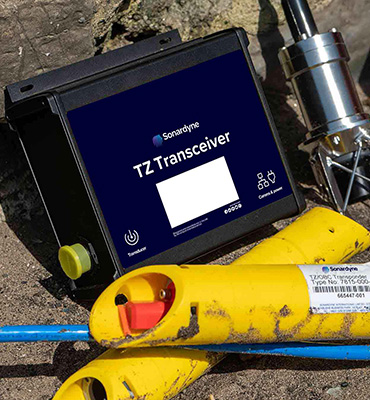
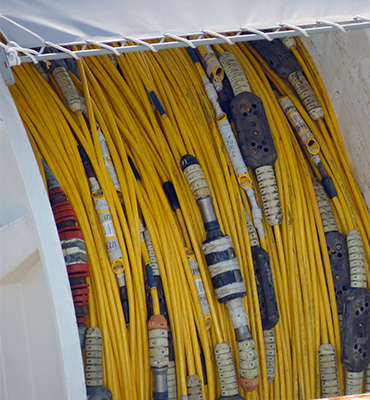
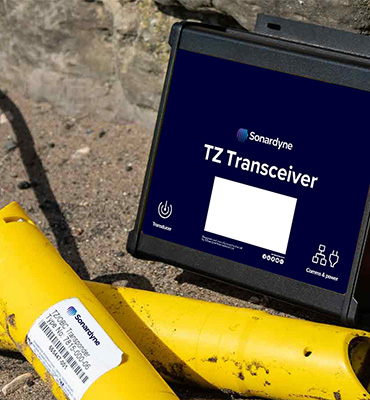
Specifications table
| Feature | Type 8263-010-0021 | Type 8263-010-0022 |
|---|---|---|
| Operating Frequency | HF (35–50 kHz) | MF (20–34 kHz) |
| Transmit Source Level (dB re 1 µPa @ 1 m) | >184–186 dB | >184-187 dB |
| Receive Sensitivity (dB re 1 µPa) | <90 dB | <90 dB |
| Ranging Precision | Better than 0.5 m | Better than 15 mm |
| Addresses | 401 | 1520 |
| Power | 28 V dc, maximum 2 A | 28 V dc, maximum 2 A |
| Communications | RS232/RS485 @ 9,600 to 115,200 baud, Ethernet | RS232/RS485 @ 9,600 to 115,200 baud, Ethernet |
| Mechanical Construction | Aluminium alloy | Aluminium alloy |
| Operating Temperature | -5 to +50°C | -5 to +50°C |
| Storage Temperature | -20 to +70°C | -20 to +70°C |
| Dimensions (Length x Width x Height) | 223 x 220 x 91 mm | 223 x 220 x 91 mm |
| Weight | 3 kg | 3 kg |
| Feature | Remote Transducer HF | Remote Transducer MF |
| Operating Frequency | HF (35–50 kHz) | MF (20–34 kHz) |
| Depth Rating (Acoustic Transducer) | 100 m | 100 m |
| Cable Length | 20 m | 20 m |
| Mechanical Construction | Stainless steel | Stainless steel |
| Dimensions (Diameter x Length) | 90 x 211 mm (without cable) | 90 x 211 mm (without cable) |
| Weight in Air | 3.7 kg (without cable) | 3.7 kg (without cable) |
Did you know?
TZT is suitable for USVs and seismic surveys
Overview
HPT 3000 is a high performance Wideband 2-enabled Ultra-Short BaseLine (USBL) tracking and telemetry transceiver compatible with our range of 6G transponders.
The transceiver’s acoustic performance is optimised for operations in coastal and near shore where high elevation tracking of targets is often required in low noise environments.
This unit is easy to install on a simple over-the-side pole arrangement enabling a wide range of vessels to take advantage of Mini-Ranger 2 including: anchored barges, small survey craft and uncrewed surface vessels.
HPT 3000 has an internal MTi-30 Xsens sensor which provides pitch, roll and heading data for search and salvage applications which are time critical requiring turn on and track functionality. Shallow water and pipelay from anchor barges also benefit from the internal sensor being calibration free.
The advanced multi-element processing enables transponders to be positioned more precisely, more quickly and more robustly due to improvements in signal processing algorithms. When used as part of a complete Mini-Ranger 2 USBL system, external heading and inertial navigation sensor, class leading performance is achieved.
At a glance
- Use it with Mini-Ranger 2 USBL
- Acoustically optimised for tracking targets in shallow water
- Simple to install on all types of vessel including uncrewed
- Ethernet comms for fast position updates
- Excellent corrosion resistance
‘Discovery Mode’ enables users to automatically detect previously deployed transponders including their configured address and channel, making the system easier to use. The HPT 3000 is a highly capable acoustic USBL tracking transceiver. Its multiple simultaneous channels enable robust tracking of 10 targets.
Manufactured in Aluminium Bronze, the HPT 3000 is intended to be fitted temporarily or permanently to a vessel’s through-hull or over-the-side pole. The full hemispherical coverage optimises performance in shallow water environments boosting transmissions and receive sensitivity in the horizontal axis.
Power and communications are contained in a single cable and because communications transmit from the transceiver to control-room ESH, data rates of up to 100 Mps can be achieved. Ethernet-based communications also enable the unit to interface with your vessel’s existing network for rapid installation.
Mini-Ranger 2 for the next-level USV operations
Read moreL3Harris takes USBL-aided AUV navigation to the next level
Read moreBringing special order accuracy to small diameter AUVs
Read more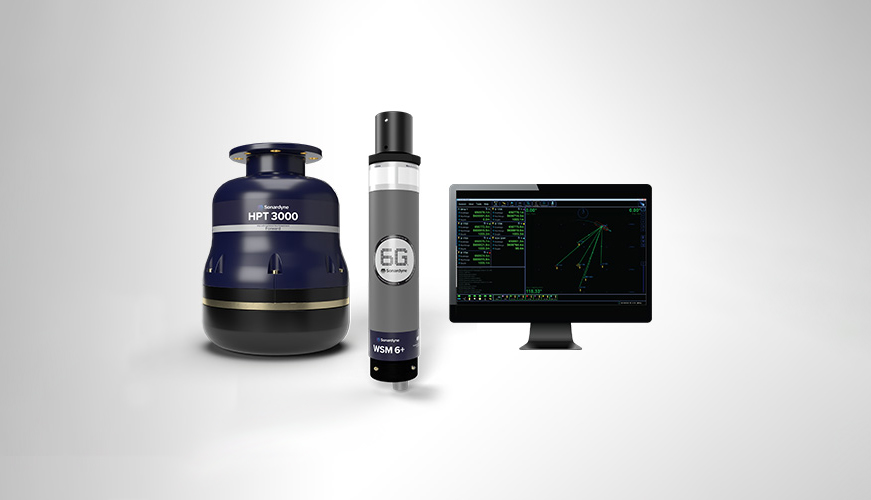
Mini-Ranger 2 USBL
Mini-Ranger 2 is our mid-level USBL target tracking system, perfect for nearshore operations, UXO surveys, search and recovery and structure inspections. With a 995 m operating range, extendable to 4,000 m, it can track up to ten underwater targets simultaneously, including divers, towed instruments, ROVs and AUVs.
Choose to add the Marine Robotics software pack and it will communicate with subsea robotic platforms, sharing positions and exchanging data.
A compact, easily installed system it’s your ideal choice for temporary installation on small survey vessels, as well as USVs.
For the full picture of what your Mini-Ranger 2 USBL is capable of, please visit its dedicated product page.
Specifications table
| Feature | Type 8212 | |
|---|---|---|
| Operational frequency | MF (20–34 kHz) | |
| Transceiver performance | Operating range | Restricted to 995 m with Mini Ranger 2 system (4000 m with extended range version) |
| Acoustic cover | Full 180° | |
| Range precision | Better than 15 mm | |
| Positioning repeatability external MRU | All transceivers tested to better than 0.2% of slant range 1 Drms / 0.14% 1 Sigma | |
| Positioning repeatability internal Xsens pitch and roll | All transceivers tested to better than 1.3% of slant range 1 Drms / 0.9% 1 Sigma | |
| Transmit source level (dB re 1 µPa @ 1 m) | 194 dB | |
| Tone Equivalent Energy (TEE) | 200 dB (3 JA) | |
| Electrical | 48 V dc (±10%), typical 15 W, maximum 120 W | |
| Communication | Ethernet 100 Mbps | |
| Operating temperature | -5 to 40°C | |
| Storage temperature | -20 to 45°C | |
| Mechanical construction | Aluminium bronze | |
| Dimensions (height x diameter) | 310 x 234 mm | |
| Weight in air/water | 19.4/9.5 kg | |
| Note: The absolute accuracy of the system is dependent upon the quality of external attitude and heading sensors, beacon source level, vessel noise, water depth, mechanical rigidity of the transceiver deployment machine, SV knowledge and proper calibration of the total system using CASIUS. |
Frequently asked questions
How to clean a transceiver array face
MF Beacon Positioning for Transition Zone and Ocean Bottom Cable Applications
HPT 2000/3000 Testing
Has anyone ever installed an echosounder and Ranger 2 USBL transceiver directly beside each other? Would this work?
How do USBLs work?
Does the HPT’s main connector need any maintenance?
When to use Depth Aiding
What acoustic address should I use for my USBL transponder
How to interface Ranger 2 into a 3rd party survey system
How can an uncrewed system interact with Ranger 2 software?
STP files
Software and firmware
Software and control hardware
Datasheets
Manuals and quick start guides
Technical bulletin
Did you know?
HPT 3000 is part of our Mini-Ranger 2 USBL system
Reassuringly reliable Ranger 2
Ranger 2 is more than just an acoustic tracking and positioning system. It goes way beyond tracking; it can be part of a dynamic positioning system, it supports robust two-way data communication with a range of seafloor sensors to collect data, it can support AUV command and control and will even release seabed moorings.
Ranger 2 can even be run from an uncrewed surface vehicle (USV) enabling truly remote, autonomous operations. Whether your mission involves seabed surveys, offshore energy site inspections or commanding a fleet of AUV’s, Ranger 2 can help you expand them over the horizon and to the edges of your imagination.
It comes with an impressive list of standard features, our award-winning 6G (sixth generation) acoustic hardware platform and Sonardyne Wideband 2 digital signal architecture. The flexibility of the Ranger 2 family is further extended by our range of 6G transponders to support a wide variety of applications.
Why should you invest?
Our Ranger 2 family gives you the versatility you need, at the investment level you can afford, to get your project completed quickly and efficiently. It’s engineered like no other USBL on the market. Adaptable, scalable and always compact, there is a Ranger 2 USBL to suit any size vessel or project. As your needs grow, bolt-on software packs unlock additional capability and protect your investment. Whichever size suits you best, they will always be compatible with our full range of 6G transponders and many other vessel systems.
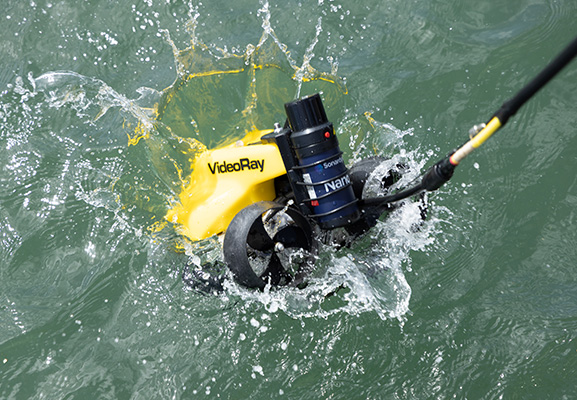
Micro-Ranger 2 USBL
The ‘baby’ of the Ranger 2 family and the ideal entry-level USBL, Micro-Ranger 2’s compact size contradicts its impressive performance. It may be our smallest underwater tracking system to date, but it will have a big impact on your operations.
Never used a USBL system before? No problem. Micro-Ranger 2 is simple to setup and use.
Need to know where your targets are? Micro-Ranger 2 has them covered. Precision, ease of use and versatility come as standard. It’s built around the same market-leading hardware and digital acoustic technology you’ll find in our family of deep water USBL systems, but for significantly less cost and complexity.
For the full picture of what your Micro-Ranger 2 USBL is capable of, please visit its dedicated product page.
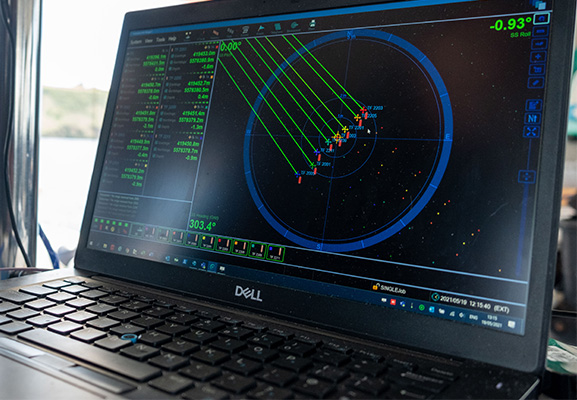
Mini-Ranger 2 USBL
Mini-Ranger 2 is our mid-level USBL target tracking system, perfect for nearshore operations; UXO surveys, search and recovery and structure inspections. With a 995 m operating range, extendable to 4,000 m, it can track up to ten underwater targets simultaneously, including divers, towed instruments, ROVs and AUVs.
Choose to add the Marine Robotics software pack and it will communicate with subsea robotic platforms, sharing positions and exchanging data.
A compact, easily installed, system it’s your ideal choice for temporary installation on small survey vessels, as well as USVs.
For the full picture of what your Mini-Ranger 2 USBL is capable of, please visit its dedicated product page.

Ranger 2 USBL
Ranger 2 is the largest USBL in the family and the most powerful USBL on the market. Able to simultaneously track up to 99 targets with up to 11,000 m range, it is anything but standard.
Recommended for installation on large vessels and USVs, Ranger 2 incorporates over 30 years of our USBL innovation and know-how. It has a global vessel track record and is used for offshore energy, research, cable-lay, salvage and naval operations, to name but a few.
Sharing a common platform with other Sonardyne USBLs, Ranger 2 supports all industry standard DP telegrams and acoustically aided inertial navigation systems (INS).
For the full picture of what your Ranger 2 USBL is capable of, please visit its dedicated product page.
6G
Our 6th generation (6G) technology provides faster, secure and robust data communications from seabed to surface . This gives you speedier updates on the location of your assets and access to your vital data.
Wideband
Our wideband technology enables digital high-throughput data, range resolution and accuracy with low latency. Teamed with our 6G it gives you fast, reliable, accurate data over greater distances.
Robotics
Uncrewed, autonomous surface and underwater vehicles are increasingly used for coastal, deep sea and over-the-horizon operations, reducing costs, risks and carbon footprint. Thats why we have a dedicated “bolt on” pack for our Ranger 2 to enhance your robotics operations.
Dynamic positioning
We’ve been engineering high integrity position reference systems for dynamically positioned vessels since the early 1990s. Our USBL, LUSBL and SPRINT- INS products provide dynamic positioning solutions for a range of vessels and environments.
What is possible
As our mainstay USBL system for nearshore operations, Mini-Ranger 2 is a tracking, positioning and communications system with robotic capability. Straight out of the box it can track and communicate up to 995m. With an extension pack, this can be extended to 4,000m making it suitable for any AUV, diver, ROV, towfish, USV or vessel in shallow to mid-depth waters across many operational areas.
For ocean science and environmental campaigns, its survey-grade accuracy adds precision to your operations whether they involve; environmental surveys, aquaculture, coastal science, research vessels, sensor tracking or site survey and characterisation for offshore renewable energy.
For Naval test ranges and military diving – Mini-Ranger 2 allows you to track up to ten divers simultaneously, bringing precision and safety to maneuvers.
It offers more than just tracking – with the addition of a robotics pack – Mini-Ranger 2 allows you to communicate with, command and control up to ten vehicles simultaneously within your marine robotics fleet.
Technology Focus – Mini-Ranger 2 USBL for renewables
USBL tracking without the complexity – when micro is too small, but Ranger 2 is too big – mini is just right
Why choose it?
- Portable and quick to mobilise; a great choice for small survey vessels, moored barges and uncrewed vessels
- 995 m operating range; extendable to 4,000 m (requires export license)
- System accuracy 0.2%–1.3% of slant range, depending on system configuration
- Optional Marine Robotics software feature pack provides command and control of AUVs
- Works with a wide range of 6G transponders including RT 6 acoustic releases
- Simple to configure and easy to use, even with no experience of acoustic tracking technology
- Developed and supported by a company with over 50 years of experience in innovative underwater technology
The kit
HPT 3000
HPT 3000 is the highly capable surface deployed USBL transceiver at the heart of the Ranger 2 system. It’s suitable for all your operations, whether they involve shallow water, high elevation, long lay back operating scenarios, or data telemetry.
You can choose to deploy it over the side of your vessel on a simple pole arrangement or under the hull of a USV. If your operations demand a permanent deployment, a through-hull deployment setup is possible. Simply fit a transponder to each target you want to track and you’re ready to go!
HPT 3000 simply connects to your PC running the Ranger 2 software – the same process and software applies across the whole Ranger 2 family. As standard, it enables data harvesting from seafloor instruments, using crewed or uncrewed vessels, and works with a wide range of 6G transponders including RT 6 acoustic releases.
Transponder options
A wide range of our 6G transponders can be used with Mini-Ranger 2, allowing you to select the right one for your operations. If you’re tracking divers, small to medium sized AUVs or micro-class ROVs, Nano is a popular choice. When tracking larger targets such as a towfish, a crane wire lowering a structure, or an observation-class ROV, WSM 6+ will meet your requirements. If you need to release and retrieve seabed assets, our RT 6 allows you to deploy, track and recover seafloor equipment – all in one instrument.
Mini-Ranger 2 in action
Bringing special order accuracy to small diameter AUVs
Read moreMini-Ranger 2 for the next-level USV operations
Read moreL3Harris takes USBL-aided AUV navigation to the next level
Read morePerformance
• 0.2% positioning repeatability using external MRU
• 1.3% positioning repeatability using internal MRU
• Up 10 targets tracked, simultaneously
• 995 m maximum tracking range, extendable to 4,000 m
• 3 Hz position update rate
Acoustics
• MF frequency (19–34 kHz)
• Supports Sonardyne Messaging Service for data exchange
• Transceiver optimised for high elevation tracking in quiet environments
• Sonardyne Wideband 2 acoustics for reliable performance in both shallow and deep water
Ownership
• ITAR Controlled: No
• Warranty: 1 year return to Sonardyne service centre
• What’s in the box: HPT 3000, SIU, deck cables, software, manual
• UK Export Licence: Not required for 995 m version. Required for extended range (4,000 m) version
Overview
• Whatever you want to track, it adds survey-grade precision and accuracy to your operations
• Mini Ranger 2 opens up the possibilities for your marine robotics fleet to communicate, command and control them
• Provides flexibility to your underwater operations without compromising performance
Specifications table
| Feature | Specification |
|---|---|
| Design | Powerful features for commercial users |
| Easy to transport, hardware comes in one box | |
| Configurable for manned or unmanned vessel operations | |
| Quick to mobilise, configure and uninstall | |
| Shares common platform with other Sonardyne USBLs | |
| Performance | 0.2% positioning repeatability using external MRU |
| 1.3% positioning repeatability using internal MRU | |
| Up 10 targets tracked, simultaneously | |
| 995 m tracking range; extendable to 4,000 m | |
| Uo to 3 Hz position update rate | |
| Acoustics | MF frequency (20–34 kHz) |
| Sonardyne Wideband 2 digital acoustics for reliable performance in both shallow and deep environments | |
| Supports Sonardyne Messaging Service for data exchange | |
| Transceiver optimised for high elevation tracking |
